
INTEGRATED URBAN WATER
PENINSULAR
MANAGEMENT IN
MALAYSIA

Integrated Urban Water Management (IUWM) in Peninsular Malaysia
2018
Integrated Urban Water Management (IUWM) in Peninsular Malaysia
© Academy of Sciences Malaysia 2018
All Rights Reserved. No part of this publication may be reproduced, stored in a retrieval system, or transmitted in any form or by any means, electronic, mechanical, photocopying, recording or otherwise without prior permission in writing from the Academy of Sciences Malaysia.
Academy of Sciences Malaysia Level 20, West Wing, MATRADE Tower Jalan Sultan Haji Ahmad Shah off Jalan Tuanku Abdul Halim 50480 Kuala Lumpur, Malaysia
ASM Position Paper 04/17
Endorsed: Dec 2017
PerpustakaanNegaraMalaysia
Cataloguing-in-PublicationData
IntegratedUrbanWaterManagement(IUWM)inPeninsularMalaysia.
Modeofaccess:Internet eISBN978-983-2915-89-8
1.Municipalwatersupply.
2.Water-supply--Management.
3.Governmentpublications--Malaysia.
4.Electronicbooks. 628.1091732
EXECUTIVE SUMMARY
Chapter 1: CONCEPTUAL
FRAMEWORK
1.1 Introduction
1.2 Objectives
1.3 Terms of Reference 1.4 IUWM Framework and Approach 1.5 Task Force
Chapter 2: INTEGRATED URBAN WATER MANAGEMENT (IUWM)

2.1 Definition
2.2 Need for IUWM
2.3 Examples of IUWM 2.3.1 Water Intelligence 2.3.2 Smart Water Infrastructure 2.3.3 Water Sensitive Urban Design 2.3.4 Non-structural Measures
Chapter 3: STAKEHOLDER ENGAGEMENTS
3.1 Literature Review
3.2 1st Stakeholder Consultation Meeting 3.2.1 Introduction 3.2.2 Objectives 3.2.3 Outputs
3.3 FGD – Johor Bahru Conurbation 3.3.1 Introduction 3.3.2 Objectives 3.3.3 Outputs
3.4 FGD – Georgetown Conurbation
3.4.1 Introduction 3.4.2 Objectives 3.4.3 Outputs
3.5 FGD – Kuantan Conurbation
3.5.1 Introduction 3.5.2 Objectives 3.5.3 Outputs
FOREWORD PREFACE LIST OF TABLES LIST OF FIGURES ABBREVIATIONS
I II III
IV
III
1 7 7 8 8 10 13 15 15 16 17 17 17 19 19 21 21 22 22 22 22 24 24 24 24 28 28 28 28 33 33 33 33 Table of Contents
3.6 FGD – Kuala Lumpur Conurbation
3.6.1 Introduction
3.6.2 Objectives
3.6.3 Outputs
3.7 2nd Stakeholder Consultation Meeting
3.7.1 Introduction

3.7.2 Objectives
3.7.3 Outputs
Chapter 4: IUWM RECOMMENDATIONS & IMPLEMENTATION STRATEGIES
4.1 Introduction
Chapter 5: CONCLUSION
5.1 Conclusion
APPENDICES
Appendix A: Position Paper
Appendix B: Task Force Minutes of Meeting
Appendix C: Expert Review Paper on IUWM
Appendix D: Summary of Outcomes from 1st Stakeholder Meeting
Appendix E: Focus Group Discussion – Johor Bahru Conurbation
Appendix F: Focus Group Discussion – Pulau Pinang Conurbation
Appendix G: Focus Group Discussion – Kuantan Conurbation
Appendix H: Focus Group Discussion – Kuala Lumpur Conurbation
Appendix I: Summary of Outcomes from 2nd Stakeholder Meeting
36 36 36 36 41 41 41 41 43 43 58 58
List of Tables
4.1 BMPs for IUWM Implementation for the Different Water Sectors
4.2 IUWM Objectives and Position Recommendations
List of Figures
1.1 Collaborative Approach to IUWM
1.2 IUWM Framework
1.3 Transition to Urban Water-Sensitive Cities
1.4 ASM Water Guidelines
1.5 IUWM Framework
2.1 IUWM: A Balancing Act?
2.2 Urban Water Cycle with IUWM
2.3 Real-time Data Analytics for Water Intelligence

2.4 Smart Water Infrastructures
2.5 An Example of Water Sensitive Urban Design
2.6 Smart Billing
43
46 10 11 11 12 13 15 17 18 18 19 20
Integrated Urban Water Management In Peninsular Malaysia 7
Abbreviations
Academy of Sciences Malaysia/ Akademi Sains Malaysia
Asia Pacific Environmental Consultants Sdn Bhd
Badan Kawalselia Air Johor Best Management Practices
Fire and Rescue Services
Capital Expenditure
Comprehensive Development Plan Communal Septic Tanks
Dewan Bandaraya Kuala Lumpur
Department of Irrigation and Drainage/ Jabatan Pengairan dan Saliran Department of Environment/ Jabatan Alam Sekitar Doctor
Entry Point Project
Erosion and Sediment Control Plan
Fellow of the Academy of Sciences Focus Group Discussions
Federation of Malaysian Manufacturers
Gross Pollutant Traps Global Water Partnership

Hybrid Off River Augmentation System
Integrated Coastal Zone Management
Integrated Lake Basin Management Engineer
Integrated River Basin Management Iskandar Regional Development Authority Individual Septic Tanks Imhoff Tanks
Integrated Urban Flood Management Integrated Urban Water Management Indah Water Konsortium Sdn Bhd
Integrated Water Resources Management Water Supply Department/ Jabatan Bekalan Air Jawatankuasa Kemajuan dan Keselamatan Kampung Public Works Department/ Jabatan Kerja Raya
Minerals and Geoscience Department / Jabatan Mineral dan Geosains Civil Defense Department/ Jabatan Pertahanan Awam Negara Department of Town and Country Planning/Jabatan Perancang Bandar dan Desa Sewerage Services Department/ Jabatan Perkhidmatan Pembentungan
National Solid Waste Management Department/ Jabatan Pengurusan Sisa Pepejal Negara
Ministry of Energy, Green Technology and Water/ Kementerian Tenaga, Teknologi Hijau dan Air
Ministry of Urban Well Being, Housing and Local Government/ Kementerian Kesejahteraan Bandar, Perumahan dan Kerajaan Tempatan
Ministry of Federal Territories/ Kementerian Wilayah Persekutuan
ASM ASPEC BAKAJ BMPs BOMBA CAPEX CDP CST DBKL DID DOE Dr EPP ESCP FASc FGDs FMM GPT GWP HORAS ICZM ILBM Ir IRBM IRDA IST IT IUFM IUWM IWK IWRM JBA JKKK JKR JMG JPAM JPBD JPP JPSPN KeTTHA KPKT KWP
8
Integrated Urban Water Management In Peninsular Malaysia
LA21
LAJ LUAS MATRADE MJTD MOH MOM MPAJ MPK MPS Mr MSANg MSMA-2 MWA MyCDNet NADMA NAHRIM NAWABS NCIA NGOs NPP-3 NRE NRW NSCP NTS NWP NWR NWRC NWRD NWRP NWRS O&G OPEX PES PBAPP POP PPP PRABN Prof PTG R&D RBMC RM
Local Agenda 21
Lembaga Air Johor (formerly Badan Kawalselia Air Johor, BAKAJ)
Selangor Waters Management Board/ Lembaga Urus Air Selangor Malaysia External Trade Development Corporation
Majlis Jawatankuasa Tindakan Daerah
Ministry of Health/ Kementerian Kesihatan
Minutes of Meeting
Majlis Perbandaran Ampang Jaya Majlis Perbandaran Kuantan Majlis Perbandaran Selayang Mister
Majlis Sumber Air Negeri
Manual Saliran Mesra Alam Malaysian Water Association

Malaysian Capacity Development Network in Sustainable Water Management
National Disaster Management Agency National Hydraulic Research Institute Malaysia
National Water Balance Management System Northern Corridor Implementing Agency
Non-governmental Organisations National Physical Plan 3
Ministry of Natural Resources and Environment/ Kementerian Sumber Asli dan Alam Sekitar Non-Revenue Water National Sewerage Catchment Plan Natural Treatment Systems Numerical Weather Prediction National Water Resources National Water Resources Council National Water Resources Department National Water Resources Policy National Water Resources Study Oil and Grease
Operational Expenditure Payment for Ecosystem Services
Perbadanan Bekalan Air Pulau Pinang
Public Outreach Program
Public-Private Partnership Program Ramalan dan Amaran Banjir Negara Professor Land and Minerals Office/ Pejabat Tanah dan Galian Research and Development River Basin Management Committee Ringgit Malaysia
Integrated Urban Water Management In Peninsular Malaysia 9
Abbreviations
ROL RUU SDG
Sg SME SMI SPAN SPPCA STI STP SUK SWM SWMA TMDL UMP UNITEN USM WDM WMO WRF WSIA WSUD WTP WWP WWTP YBhg
River of Life
Rang Undang-Undang Sustainable Development Goals Sungai
Small and Medium Enterprises
Small and Medium Industries National Water Resources Commission/ Suruhanjaya Perkhidmatan Air Negara
Skim Pelabelan Produk Cekap Air Science, Technology and Innovation Sewage Treatment Plant State Secretariat Office
Sustainable Water Management State Water Management Authority

Total Maximum Daily Load
Universiti Malaysia Pahang
Universiti Tenaga Nasional
Universiti Sains Malaysia Water Demand Management World Meteorological Organisation Water Resources Functional Water Services Industry Act 2006 Water Sensitive Urban Design Water Treatment Plant
Water Watch Penang Wastewater Treatment Plant Yang Berbahagia
Integrated Urban Water Management In Peninsular Malaysia10
Executive summary
E1 PROJECT BRIEF

The Academy of Sciences Malaysia (ASM) is an independent think-tank providing strategic advice to the government on Science, Technology and Innovation (STI) matters. It has since 2008 been undertaking studies pertaining to the water sector considered strategic for the country’s socio-economic development. The studies have been overseen by a dedicated ASM Water Committee.
One of the task forces mandated by the ASM Water Committee on Sustainable Water Management (SWM) Programme was the inception of an Integrated Urban Water Management (IUWM) in 2015 chaired by Dr Low Kwai Sim FASc, to provide water-related policies and strategic programmes relevant for urban areas. As this task required strong water resources and technical inputs, Ir C. Kamalesen was nominated as the Subject Matter Expert, assisted by Mr Kervin Chong.
The main objective of the IUWM Task Force was to prepare a Position Paper to conceive a pragmatic IUWM system for cities and urban areas in the country. The complementing focus was slated on urban planning controls, urban drainage management and urban disaster risk management (i.e. floods, prolonged dry spell and water pollution), underpinned by a review of the water governance structure for urban water management; in particular, water supply, sanitation, storm- and wastewater management, and linking the same with sustainable economic, social, environmental and development goals.
Four large cities in Peninsular Malaysia were chosen for the study: Georgetown, Kuala Lumpur, Johor Bahru and Kuantan, based largely on the key themes – water supply; water pollution; disaster risk (floods, prolonged dry spells and pollution) management; and planning and development controls.
The IUWM Task Force adopted a collaborative approach, working within an IUWM framework towards an urban water-sensitive city. The outputs comprised a number of specific strategic recommendations that could be taken up by the relevant ministerial and local authorities in their management of cities and urban areas.
The IUWM Task Force have had extensive consultations with the relevant stakeholders for their feedbacks and inputs on specific issues such as the urban water issues supplemented with summary reviews of thematically related policies, best management practices (BMPs) and innovations that have been successfully implemented locally and from selected countries.
During its tenure, the IUWM Task Force, comprising representatives from various government institutions and agencies, private institutions, non-governmental organisations (NGOs) and institutions of higher learning, held no less than seven task force meetings, four focus group discussions (FGDs) and two national stakeholder consultations from March 2015 till February 2017 prior to finalising the Report.
This Position Paper is prepared for Peninsular Malaysia under Phase 1. Phase 2, for Sabah and Sarawak, has been commissioned separately and will be chaired by Dato Lim Chow Hock FASc.
Integrated
Management In Peninsular Malaysia 11
Urban Water
Executive summary
E2 INTEGRATED URBAN WATER MANAGEMENT

The IUWM Task Force followed the maxim of the World Bank, which defined IUWM as “a holistic mode of strategic planning which takes a landscape view of water challenges by looking at competing water users in an urban area, catchment or river basin…” and “implemented through coordinated and flexible planning among water using sectors, allowing for optimal sequencing of traditional and new infrastructure with alternative management scenarios that leverage on efficiencies and conservation.
IUWM is an avenue to manage urban waters in a sustainable manner; balancing the supply and demand of water in cities, which if all things being equal, would move towards achieving urban water security in the urban environment (Figure E.1).

Figure E.1 Urban Water Cycle with
Some of the main outcomes of IUWM in cities and urban areas are:
(a) (b) (c) (d) (e) (f)
IUWM
More resilient, liveable, productive and sustainable water security for socio-economic prosperity through efficient use of diverse water resources.
Healthy urban watercourses.
Benefits from lower local flood risk and least damage.
Increase of public spaces to harvest clean and recycled water.
More awareness of urban biodiversity and the possibility of carbon sequestration.
Reduction of the urban heat island effects.
Specific IUWM examples include adoption of water intelligence and smart water infrastructure in managing water supply, promotion of water sensitive urban design (WSUD) as part of the urban water cycle to enhance design and reduce water pollution; and through non-structural measures such as stakeholders’ engagement and outreach programs, to create awareness on the advantages of adopting IUWM.
Integrated Urban Water Management In Peninsular Malaysia12
Executive summary
E3 IUWM RECOMMENDATIONS & IMPLEMENTATION STRATEGIES
A summary of the BMPs garnered from stakeholders’ inputs and examples from selected countries is provided in Table E.1. The position proposals and recommendations from the study are provided in Table E.2. Various issues and challenges highlighted in the tables can be taken up in future by the relevant ministries and local agencies to address. In doing so, these agencies may also like to take the opportunity to revisit at their institutional roles on how best to customise and manage their urban waters to ensure urban water security.
Table E.1 Best Management Practices for IUWM by Water Sectors
Water Sector BMPs
Water Supply Wastewater Recycling/Reuse
Water Pollution
•
Development of Alternative Water Sources (Downstream Reservoirs, Desalination, Groundwater, etc.)
Rainwater Harvesting Water Efficient Products Green Technology Adoption

Artificial Wetlands Ecosystem Services Regulations
Urban Stormwater Management Manual (MSMA) Advanced Treatment Systems Total Maximum Daily Load (TMDL) Programme
Disaster Management Water Sensitive Urban Design (WSUD) Controlled Drainage System Climate Change Adaptations Technology – Flood Forecasting
Development Controls
•
•
• •
• • • •
• • • • •
• • •
Institutional and Legislation Review Urban Watershed Management Awareness and Capacity Building Integrated Urban Water Management In Peninsular Malaysia 13
Objectives
Objective 1
Streamlining the water resources management at federal and state levels to focus on urban waters
Objective 2
Review any related urban legislations and guidelines pertaining to water pollution, flooding and general environmental management in cities
Objective 3
Ensure adequate financing is available for IUWM implementation
• • •
• • •
Objective 4 Review institutional roles for federal and state with regards to urban water management
Objective 5
Strengthen development controls by integrating urban planning when developing water resources or in river basin management
• •
•
•
• •
• •
Proposals
Proposals(s)/ Recommendation(s)
Enabling Environment
Select the relevant water aspects from the National Water Resources Policy (NWRP) to develop specific urban water programmes for implementation. Develop urban water partnerships at the federal/state level with regard to urban water policies and management.
As sewage is one of the main pollutants from urban areas, it is timely to develop and implement the National Sewerage Catchment Plan (NSCP) at national and state levels.
Enact and implement provisions under the Rang Undang-Undang (RUU) on Water Resources at the federal and state levels.
Review the Streets, Drainage, and Building Act 1974 to take into consideration the drainage capacity design to cope with urban floods; and to increase the acreages of green areas in cities to encourage natural infiltration of surface run-off into the ground.
For the water supply reticulation system – to replace all faulty piping systems wherever found, and to discourage illegal water tapping to reduce non-revenue water (NRW) in urban cities and urban areas.

This is a big subject that will be taken up by another Task Force in ASM, particularly on water pricing.
Our recommendation is there must be sufficient incentives for public-private partnership (PPP) investments in urban water development, especially in terms of green technologies and innovations
Institutional Roles
The states are encouraged to review their existing institutional arrangements to take into consideration urban water as a crucial component of the overall state water resources management and development.
Management Instruments
The states to review their urban planning guidelines, particularly on drainage designs and water-related disaster risk management.
Provide state or local guidelines on how each of the three focus areas can best be implemented and managed.
To set-up respective basin level management committees to plan and oversee development at the basin level.
To ensure adherence to the Manual Saliran Mesra Alam (MSMA-2) and pertinent guidelines for development.
Take action to safeguard and protect waterways, water bodies and river reserves.
Table
E.2 IUWM
Integrated Urban Water Management In Peninsular Malaysia14
Objectives
Objective 6
Ensure adequate and equitable water allocation among urban stakeholders
• • • • •
Objective 7
Ensure effective pollution controls in urban areas to safeguard water resources downstream towards achieving water security
Objective 8
For disasters such as flooding, to implement integrated urban flood management (IUFM)
• • • • • •
Proposals(s)/ Recommendation(s)
Management Instruments
Establish a single state agency for coordination and allocation of water in the state and urban areas, especially during periods of pro-longed dry spells. Encourage alternative water resources development (groundwater, downstream reservoir, barrages within the basin, desalination, etc.) as reserves.

Adopt wastewater reuse/recycling strategies. Improve water use efficiency and reduce water consumption. Decision management system tools: National Water Balance System (NAWABS) but customised to state and district levels.
Control sullage and sewage effluent discharge into water courses. Control point source pollution from small and medium industries (SMI) and enterprises (SME).
Pollution control from non-sanitary landfills and open dumps in urban areas. Pollution control from non-point sources. Adoption of Total Maximum Daily Load (TMDL) for water pollution accounting. Review existing water quality standards.
• • • • •
Adopt IUFM approach for cities and urban areas.
Local authorities to adopt a flood disaster management programme that will be activated to bring relief to the flooded areas immediately.
Expansion of flood forecasting programme under Program Ramalan Banjir Negara (PRABN) to high risk urban areas.
Implement urban flood mapping and information dissemination to reduce property damage and loss of life.
Urban run-off management based on MSMA-2 and WSUD.
Objective 9
For pro-longed dry spells, to develop urban water stress management mechanisms
• • • • •
Local authorities to develop a pro-longed dry spell management programme that will be activated to prioritise water allocations to water stressed areas.
Develop water supply plans that are resilient against water shortages (seasonal dry periods).
Long-term water resources monitoring plans for pro-longed dry spells for cities and urban areas.
Investigate the availability of alternative water sources in urban areas that can be used during prolonged dry spells.
Gazette and increase capacity of flood detention ponds as possible emergency water supply sources.
Objective 10 Encourage stakeholder participation in urban water management
• • •
Increase public awareness and capacity in urban water resources management through workshops, seminars and media publicity.
To provide incentives for adopting water saving technologies in urban areas. Incorporate lessons on urban water management as part of the education syllables.
In Peninsular Malaysia 15
Integrated Urban Water Management
E4 CONCLUSION

The IUWM Task Force has synthesised the findings from the Study (see Appendix A for the Position Paper) and the recommendations are in line with Appendix 6.4 of the Transforming the Water Sector: National Integrated Water Resources Management Plan: Strategies and Road Map by ASM.
To move forward, reports from Phases 1 and 2 will be consolidated as an Advisory Report for Strategic Interventions that will help steer the nation towards achieving water security and sustainability for cities and urban areas. This will also be in congruent to the Sustainable Development Goals (SDG) Nos. 6 and 11, ratified under the United Nations Sustainable Development Action Plan 2015.
Integrated Urban Water Management In Peninsular Malaysia16
Conceptual framework
1.1 INTRODUCTION
The Academy of Sciences Malaysia (ASM) is an independent think-tank providing strategic advice to the Government on Science, Technology and Innovation (STI) matters. It has since 2008, been undertaking studies pertaining to the water sector considered strategic for the country’s economic development. The studies have been overseen by a dedicated ASM Water Committee. Adopting Integrated Water Resources Management (IWRM) concept as the central thrust and noting that IWRM per se is rather abstract, the Water Committee has, for practical application in the Malaysian context, broken down IWRM into discrete sub-sets or subthemes. Each of these sub-sets or sub-themes was then subjected to in-depth studies culminating in the preparation of a strategic plan or advisory report for consideration and adoption by the relevant authority or agency responsible for their implementation. The studies also underwent a process of strategic consultations with the relevant institutional, community and private sector stakeholders.
One of the programmes undertaken was on Sustainable Water Management (SWM) initiated under the 9th Malaysia Plan, with an overall goal “to manage water resources (both surface and groundwater) in a sustainable manner and in accordance with the principles and practices of IWRM”. The SWM Programme has since been expanded to include the realisation of STI opportunities “in wealth creation” in Mega Science 1 and “for sustaining water resources” in Mega Science 2.
The SWM Programme complements the work already done towards achieving the goals and objectives of the National Water Resources Policy (NWRP) [Department of Irrigation and Drainage (DID), 2012], which focused on four core areas, namely:
(a) Water Resources Security; (b) Water Resources Sustainability; (c) Partnerships; and (d) Capacity Building & Awareness.

The mandate of the ASM Water Committee on SWM, of which this Project is under, is also consistent with the focus of the NWRP.
The objectives include:
(a) Provide advice to the government on water and water-related policies, issues and strategic programmes;
(b) Setting and facilitating research and development (R&D) agenda based on STI needs for the water sector; (c) Raising STI awareness, advocacy and capacity building; and (d) Promoting international networking and collaboration.
Implementation of programmes according to the above stated mandates and related IWRM sub-sets are being executed by the Task Forces appointed by the ASM Water Committee in the Academy. This Task Force on IUWM, chaired by Dr Low Kwai Sim FASc, will address the 1st programme objective as stated above. As the task required strong water resources and technical engineering inputs, Ir C. Kamalesen A/L Chandrasekaran was nominated as the Subject Matter Expert and assisted by Mr Kervin Chong.
Management In Peninsular Malaysia 17
Integrated Urban Water
1.2 OBJECTIVES
The main objective of the IUWM Task Force is to prepare a Position Paper with strategies to conceive a pragmatic IUWM system for the country.
The complementing focus is slated on:
(a) Urban planning controls; (b) Urban drainage management; and (c) Urban disaster risk management: Floods, pro-longed dry spells and water pollution.
This IUWM Position Paper is underpinned by a review of the governance structure for development in urban cities. It comprises land use planning and water resources management with regard to water supply, sanitation, storm- and wastewater management, and to link the same with sustainable economic, social, environmental, and development goals.

1.3 TERMS OF REFERENCE
The scope of work by the IUWM Task Force includes:
(a) Review the current urban water management programmes; best management practices (BMPs) and strategies already in use with regard to urban stormwater, wastewater and pro-longed dry spell management and increasing resilience of communities living in urban environments.
(b) Undertake conurbation review of four states to fill in the gaps of information regarding the current status of IUWM encompassing the northern, eastern, central and southern regions in Peninsular Malaysia:
(i) Kuala Lumpur; (ii) Georgetown; (iii) Johor Bahru; and (iv) Kuantan.
(c) Develop a framework of study focusing on the three main objectives of the study (see Section 1.2) addressing a common set of cross-cutting policy outlooks on:
(i) Urban planning controls: Review relevant governance structures in terms of policy, legislation and institutions.
(ii) Urban drainage management: Review urban drainage systems in terms of adequacy and the types of measures that have been taken or will be taken in future.
(iii) Urban disaster risk management: Review flooding, stormwater and wastewater management practices in the four urban areas. Examine the state of preparedness in terms of disaster risk management including the adequacy of existing amelioration strategies. Examine the climate change adaptation in the four urban areas.
(iv) Integration strategies: Identify current measures taken by cities and how best to integrate the various aspects in urban water management into an integrated system.
Integrated Urban Water Management In Peninsular Malaysia18
(v) Recommendations: How these measures and BMPs can be adopted by other cities to tackle existing and potential problems faced.
(vi) Way forward: How best to implement these recommendations and to integrate them into policies and decision-making; city planning; and infrastructure development.
(d) Obtain the above cross-cutting outlooks and positions. A series of consultations with a wide spectrum of stakeholder meetings was held to gather their responses and feedbacks especially for the formulation of strategies and broad action plans. These shall be supplemented by more targeted stakeholder workshops or roundtable in-depth discussions, focusing on specific and selected components and integrative topics under the overall IUWM framework.
(e) Synthesise the information to prepare the Position Paper after all the consultations and workshops/ roundtable discussions.
(f) Prepare the final draft of the Position Paper on IUWM to the ASM Water Committee for onward follow-up, which could be deliberated on at a national level conference.
(g) Based on feedbacks received at the national level, the document shall be finalised and tabled for endorsement by the ASM Water Committee.
(h) Consistent with the findings and recommendations of the Position Paper, an Advisory Report, which is a concise and succinct Policy Brief, shall be prepared for uptake by ASM. This however will be in Phase 2 of this Project, which is already commissioned.
1.4 IUWM FRAMEWORK AND APPROACH
The IUWM framework and approach began with a thorough search from official and secondary information base, such as the NWRP (DID, 2012), relevant legislations and literature on urban water management and the environment. All management modes and practices on disaster risk management were also reviewed.
In terms of governance, the approach taken was for the IUWM Task Force to gain an in-depth understanding of the practices, roles and functions of the federal, state and local authorities in managing urban waters. It adopted a collaborative approach as illustrated in the model (Figure 1.1) within a specific working IUWM framework (Figure 1.2), following a transition towards an urban water-sensitive city (Figure 1.3).
In achieving the above, collection of information and reviewing the same in the context of the overall urban water situation was one of the main tasks that would eventually lead to specific outputs and recommendations.
The Task Force, whose members were drawn from key stakeholders relevant to the themes, followed the common set of guidelines prepared by the ASM Water Committee, applicable and adopted by all Task Forces under its purview (Figure 1.4).

Integrated Urban Water Management In Peninsular Malaysia 19

River Basin Management Flood and drought Management Water Usage Irrigation Navigation Ecosystem Legislation land use, environment, water resources City management Public State and local government Organised civil society Water users • • • Instutional FireworkOther facilities plans sucs as transport and housing Urban development master plan Integrated urban water plan City plans
management URBAN DEVELOPMENT WATER SERVICES GREEN CITIES Sanitation Wastewater Water Supply Solid Waste Storm Water Figure 1.1 Collaborative Approach to IUWM Figure 1.2 IUWM Framework Sourve :GWP (World Bank) Integrated Urban Water Management In Peninsular Malaysia20
Basin
Water-Sensitive

Framework
Source: Based on T. Wong and R. R. Brown. 2009. The Water Sensitive City: Principles for Practice. Water Science and Technology 60(3):673-682
Figure 1.3 Transition to Urban Water–Sensitive Cities
Participation from Various Stakeholders Tecnical Expertise • • Position Paper Stronger Network with Stakeholders • • Strategic Consultations (SCs) Secondary Data Analysis Focal Group Discussions and Interviews • • • Rationale for the Development of Advirsory Report for Strategic Interventions • Water Security & Sustainability for Urban Areas • Inputs Impacts Activities Outputs Outcomes
Supply City Sewered City
Drained
Drainage/
Cities
Urban water transitions phases Drivers Management response Population growth Water
Waterway City
City Water Cycle City Water-Sensitive City Public health Population growth and development Social amenity and environmental health “Limits to growth” Intergenerational equity, resilience to climate change Supply hydraulics Seperate sewerage schemes
flod protection Point source and diffuse (storm water) pollution management Diver, fit-forpurpose sources and conversation promoting and linked with waterway protection
Adaptive and multi-functional Infrastructures and landscapes reinforcing water-sensitive behaviors
Figure
ASM Water Guidelines
1.4
Integrated Urban Water Management In Peninsular Malaysia 21
The strategic planning process adopted under the ASM guidelines involved extensive consultations with relevant stakeholders so as to gather feedbacks and inputs. These efforts were supplemented wherever necessary by studies commissioned on specific areas such as:
(a) Governance issues;
(b) Current status of urban flood and pro-longed dry spell management in the country; and

(c) Comparative summary reviews of relevant thematically related policies, BMPs and innovations successfully being implemented in selected countries.
During its tenure, the IUWM Task Force held many consultations and dialogues on contemporary urban water issues in the context of STI concepts and practices relevant to its theme to finalise this Position Paper.
Throughout this study, the IUWM was defined and the concepts incorporated into the existing water resources management and urban development framework towards achieving water sustainability for the long-term growth and development of the water sector. The main focus would be to identify policy directions and strategic outlook for IUWM through feedbacks from relevant stakeholders, both government and non-governmental organisations regarding the governance of the urban water sector and how best to ensure sustainable quality and quantity water for the urban areas.
In line with the National Physical Plan-3 (NPP-3) by the Department of Town and Country Planning (JPBD), now named as PLANMalaysia, the focus was on four cities in Peninsular Malaysia; Georgetown, Kuala Lumpur, Johor Bahru and Kuantan, and the key themes – water supply; water pollution; disaster risk (flood, pro-longed dry spells and pollution) management; and urban drainage planning and development controls (see Figure 1.5).
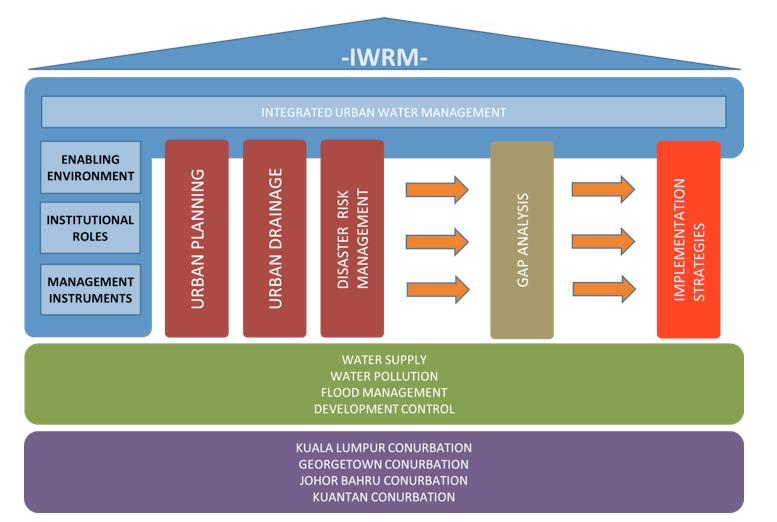
Integrated Urban Water Management In Peninsular Malaysia22
Figure 1.5 IUWM Framework
1.5 TASK FORCE MEMBERS
The IUWM Task Force members were: Chair: Dr Low Kwai Sim FASc
Members:
(a) Ir C. Kamalesen Chandrasekaran, AECOM Perunding Sdn Bhd
(b) Mr Kervin Chong, Asia Pacific Environment Consultants Sdn Bhd (ASPEC)
(c) YBhg Dato’ Lim Chow Hock FASc, Malaysian Capacity Development Network in Sustainable Water Management (MyCDNet)
(d) YBhg Datuk Abdul Kadir, Indah Water Konsortium (IWK)

(e) YBhg Datin Zaharah Mahmud, ASPEC (f) YBhg Pn Sri Jahara Yahya, ASPEC
(g) Assoc Prof Ir Dr Marlinda Abdul Malek, Universiti Tenaga Nasional (UNITEN)
(h) Dr Renard Siew, Sime Darby Berhad. (i) Ir Khairi Selamat, DID Malaysia. (j) En Mohammad Ridzwan Abidin, Kementerian Kesejahteraan Bandar, Perumahan dan Kerajaan Tempatan (KPKT)
(k) Muhammad Haqim Lokman, Kementerian Alam Sekitar dan Sumber Asli (NRE)
(l) Nizarulikram Abdul Rahim, Kementerian Wilayah Persekutuan (KWP)
(m) Nor Zamri Sodor, Lembaga Urus Air Selangor (LUAS) (n) Ir Mohmad Asari Daud, Malaysian Water Association (MWA)
(o) Mansor Abd Ghani, MWA (p) Kementerian Tenaga, Teknologi Hijau dan Air (KeTTHA) (q) Jabatan Alam Sekitar Malaysia (DOE) (r) National Hydraulic Research Institute Malaysia (NAHRIM)
(s) Federation of Malaysian Manufacturers (FMM)
The IUWM Task Force had met seven times to discuss the study methodology and findings. The meeting details are shown below. All meetings were held at the ASM office.
(a) 1st Task Force Meeting – 26 March 2015 (b) 2nd Task Force Meeting – 22 April 2015 (c) 3rd Task Force Meeting – 25 June 2015 (d) 4th Task Force Meeting – 29 July 2015 (e) 5th Task Force Meeting – 27 January 2016 (f) 6th Task Force Meeting – 12 August 2016 (g) 7th Task Force Meeting – 16 January 2017
The minutes of meeting (MOM) for each meeting are attached in Appendix B
Integrated Urban Water Management In Peninsular Malaysia 23
Integrated urban water management
2.1 DEFINITION
The World Bank defines Integrated Urban Water Management (IUWM) as “a holistic mode of strategic planning which takes a landscape view of water challenges by looking at competing water users in an urban area, catchment or river basin…” and implemented “through coordinated and flexible planning among water using sectors, allowing for optimal sequencing of traditional and new infrastructure with alternative management scenarios that leverage on efficiencies and conservation” (World Bank, 2012).
IUWM is an avenue to manage urban water in a sustainable manner; balancing water supply and demand in cities, which if all things being equal, would move towards achieving water security in the urban environment (Figure 2.1). This concept was examined in the context of the four conurbation areas.

change catchment
Figure 2.1 IUWM: A Balancing Act?
24
Urbanisation Population growth Improving living standards Pollution Climate change Land use:
Water Security Demand Supply Integrated Urban Water Management In Peninsular Malaysia
2.2 NEED FOR IUWM
IUWM has direct interactions with all water infrastructures, water demand management (WDM), alternative water resources, disaster risk management, water pollution and governance. It is involved in:
(a) Changing impacts of urban development on the natural water cycle; (b) Coordination and planning of equitable allocations of water to all users – this is paramount as more people live in cities and urban areas; and (c) Closing the water cycle loop to achieve adequate water to derive maximum benefits.
In the past (and also the present), urban water is managed in the following manner:

(a) Single path water supply system (source user discharge);
(b) Water supply, wastewater and stormwater systems: physically distinct; (c) Stormwater is conveyed away from urban areas through the drainage system and into the rivers; (d) Favours structural and centralised approaches to sewage, sullage and water supply systems; (e) High water quality standards needed regardless of end user needs; and (f) Lack of public participation in decision-making.
The above manner of managing urban water is no longer sustainable, especially when demand for good safe water is increasing exponentially by the burgeoning urban population, and where strong competing water uses are mounting.
IUWM opens an avenue to managing urban water in a manner that is deemed more sustainable (see Figure 2.2) by:
(a) Reclamation and reuse of water (stormwater, industrial discharge, sewage); (b) Stormwater and wastes as resources; (c) Integrated systems for water, energy and resource recovery;
(d) Water quality to match end-user needs (potable/nonpotable);
(e) Green infrastructure, non-structural measures and de-centralised systems; (f) Innovative technology to optimise efficiency and adaptation; (g) Inter-agency and public cooperation in decisionmaking;
(h) Diversify and maximise use of water resources (atmosphere, river, lakes and groundwater); and (i) Water demand and supply management.
The outcome of adopting IUWM to manage the urban water cycle in cities will enable them to have the following attributes and credits:
(a) Resilient, liveable, productive and sustainable with water security for economic prosperity through efficient use of the diversity of water resources. (b) Healthy urban watercourses; (c) Low flood risk and damage; (d) Public spaces to harvest clean and recycle water; (e) Biodiversity, possibility of carbon sequestration; and (f) Reduction of urban heat island effects.
Integrated Urban Water Management In Peninsular Malaysia 25
2.3 EXAMPLES OF IUWM
2.3.1 Water Intelligence

In the context of large cities as in the four conurbations under study, water intelligence is key to the water supply and demand equation. Water intelligence refers to having accurate information in the shortest possible time, so that water managers can develop effective water action plans to address the situation in the short term; and to reduce overall water loss in the longer term. This will help avert consumer’s outcry due to downtime. For the longer timeframe, water management can be improved through the adoption of new technologies and monitoring tools.
There are a number of decision support tools, which work on real-time data to enable the water manager to forecast available water to manage water demand and make informed decisions (see Figure 2.3). Most of these tools translate weather system data into hydrological data, which is then used by the river basin manager to predict areas, which will be impacted the most, either by flood or pro-longed dry spell, to enable disaster risk management mechanisms to be activated.
2.3.2 Smart Water Infrastructures
There are also a number of smart water infrastructures that can be employed locally at the user level to manage water demand (see Figure 2.4). These smart infrastructures assist to increase efficient use of raw and treated water, and reduce usage of treated water for non-potable use. A simple example of this would be the installation of rainwater harvesting systems at home, which enables use of harvested water for toilet flushing, car washings or irrigation of gardens.
 Figure 2.2 Urban Water Cycle with IUWM
Figure 2.2 Urban Water Cycle with IUWM
Integrated Urban Water Management In Peninsular Malaysia26
Figure 2.3 Real-time Data Analytics for Water Intelligence

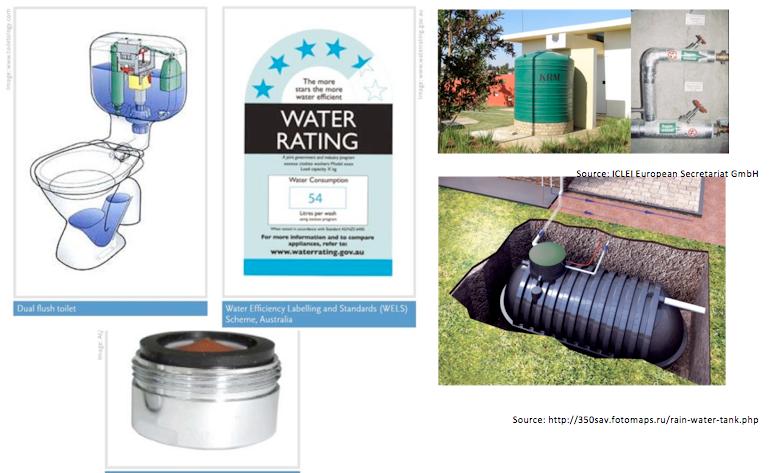
Figure 2.4 Smart Water Infrastructures

In
Malaysia 27
Integrated Urban Water Management
Peninsular
2.3.3 Water Sensitive Urban Design (WSUD)
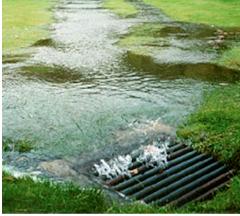
At the urban community to regional levels, concepts of Water Sensitive Urban Design (WSUD) can be adopted for management of water resources. It integrates the management of the water cycle within the built environment through early urban planning and design, towards achieving water sensitive cities and places. WSUD can be applied at all scales and is an opportunity to create beautiful, successful and resilient places and parks in cities.
An example of WSUD is the dual usage of a playground area for community use as a recreation area when there is no storm event, as well as community flood retention facility during a storm event (see Figure 2.5).
Other examples include:


(a) Green roofs; (b) Infiltration systems; (c) Green wall; (d) Rainwater harvesting/storage; (e) Swales/wetlands; (f) Water efficient fixtures; and (g) On-site water recycling.
2.3.4 Non-structural Measures
Apart from the above, there are also non-structural measures that can be employed under the smart water infrastructure concept. Usage of more informative water billing system, comparing water use at user level, community level or even at the city level, can create awareness and change in water usage patterns. An example of this water bill is shown in Figure 2.6 below.
Figure 2.2 Urban Water Cycle with IUWM

Integrated Urban Water Management In Peninsular Malaysia28
Figure 2.6 Smart Billing


Integrated Urban
Management In Peninsular Malaysia 29
Water
Stakeholder engagements
3.1 LITERATURE REVIEW
Malaysia’s population of 28 million (Census, 2010) is expected to reach 42 million by 2050. In tandem with this increase, there will be an increasing number of people living in the cities. In 2012, 71% of the population in the country resided in cities and this figure is expected to reach 80% by 2050.
This rapid urbanisation will have dire ramifications on urban utilities, amenities and services, of which the lack of good quality water and the issues of flooding are some of the resultant irritant features in the urban areas. Out-dated modes of urban water management and inadequate conveyance of rain water by the urban drainage systems have consistently resulted in flash and pro-longed flooding. Good examples were the floods of December 2014 to January 2015 in the east coast states of Peninsular Malaysia, causing disruptions to all vital services of the urban environment (including rural areas as well) and also the floods in Penang and Kedah in 2017. Pro-longed dry spells and water pollution have also gripped the urban areas and its population who are highly dependent on piped water.
In recent years, flooding in cities has escalated as more buildings and infrastructure are built but inconceivably mismatched by the existing urban drainage systems. The large urban population will likely face more unwarranted flood risks if nothing is done to ameliorate the situation. Moreover there is a lot of illegal water tapping in cities which increases non-revenue water (NRW). Thus, responses to issues of urban water management cannot be underestimated.
Climatic variability is another factor to consider because it is likely to exacerbate flood risks and damages are already felt with increasing frequency of flash floods and pro-longed dry spells affecting our cities. Many major cities are now beginning to devise strategies to improve resilience of their communities to these events. These measures include adaptations to climatic variability and having urban water management alongside the built-up environment.
The Sections below will provide the various IUWM outputs from each of the four cities and their key concerns regarding urban water in their cities.
An Expert Review Paper on IUWM consolidating the findings from literature reviews is attached as Appendix C.
3.2 1ST STAKEHOLDER CONSULTATION MEETING
3.2.1
Introduction
The 1st Stakeholder Consultation on IUWM was held on 3rd March 2016 at the Function Hall, ASM, Level 20, Menara MATRADE in Kuala Lumpur, Malaysia. The consultation meeting was attended by approximately 40 participants representing consultants, nongovernmental organisations (NGOs), government bodies and institutions of higher learning in Peninsular Malaysia (see Photos 1 – 5). The programme report is attached as Appendix D.
3.2.2 Objectives
(a) To obtain views on policies, plans and concerns on IUWM in the respective agencies.
(b) To prepare for more detailed focus group discussions (FGDs) with the respective government agencies involved in water management in cities.
3.2.3 Outputs
(a) The majority of participants were of the view that IUWM was required in Peninsular Malaysia as the way forward towards managing our existing urban water issues to ensure sustainability of future cities.
(b) Apart from improving the legislations to address specific issues related to urban water issues, also required were integration and coordination of efforts by agencies to improve enforcement.
(c) Water was a critical resource for all. The involvement of the public was needed to help amplify the need to implement IUWM strategies effectively.
(d) Funding also played an important role especially for capacity development and creating awareness of the key concepts and conceptual framework of IUWM.

Integrated Urban Water Management In Peninsular Malaysia30
(e) Some best practices have already been employed to tackle urban water issues in an integrated manner. One example was the Hybrid Off River Augmentation System (HORAS), which was used for both flood mitigation and for water supply. It also had the potential to be made into a wetland or even recreational space in the future.

(f) Other appropriate technologies and innovative approaches of IUWM that could be suitable for our cities were needed to demonstrate how the IUWM framework could be operationalised.
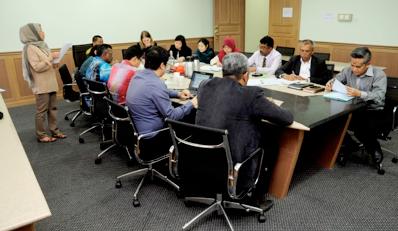
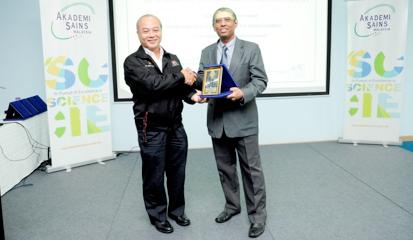
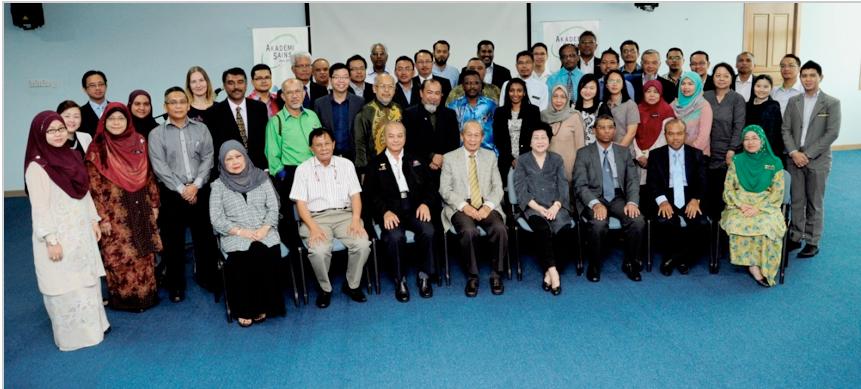
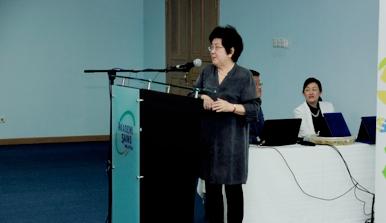
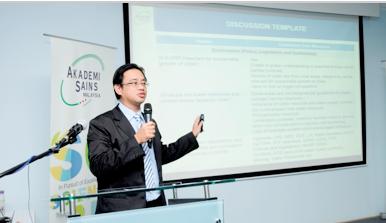
(g) Climate change adaptations were needed to future proof cities against potential disaster risks which might result in huge losses in life and property.
(h) Case studies and examples of IUWM strategies utilised in the country should be reviewed to determine suitability for replication in the country.
Photo 1 Participants of the 1st Stakeholder Consultation on IUWM
Photo 5 Presentation of group discussion by the Group Leaders
Photo 4 Participants from Group 1 in discussion
Photo 3 Dr Low Kwai Sim giving an introduction to IUWM
Photo 2 Presentation of token of appreciation to Keynote Speaker, YBhg Datuk Abdul Kadir
In Peninsular Malaysia 31
Integrated Urban Water Management
3.3 FGD – JOHOR BAHRU CONURBATION
3.3.1 Introduction
The FGD for the Johor Bahru Conurbation was held on 15 May 2016. The programme was jointly organised with the Iskandar Regional Development Authority (IRDA ). The FGD session was held at Bilik Mesyuarat GUAL, Aras Bawah, Pejabat IRDA Danga Bay (see Photos 6 – 10).
3.3.2 Objectives
(a) To identify the current best practices of IUWM in the Johor Bahru Conurbation with regards to urban water planning controls.
(b) To identify gaps, best practices and lessons learnt on IUWM in the Johor Bahru Conurbation with regards to urban water planning controls.
(c) To obtain feedback and recommendations from the stakeholders in the Johor Bahru conurbation on urban water planning controls (short, medium and long-term).
3.3.3 Outputs
Policies
(a) Water resource is under the State List, within the purview of Lembaga Air Johor (LAJ) [formerly Badan Kawalselia Air Johor (BAKAJ)]. However, water and sewerage services are managed by the National Water Services Commission (SPAN) in accordance with the Water Services Industry Act ( WSIA ) 2006. In terms of planning, there are provisions for water infrastructure and utility development under the NPP-3, state structure and local plans.
(b) IRDA, as the main authority managing Iskandar Malaysia, also has a Comprehensive Development Plan (CDP) which is now in its 2nd edition to guide regional development. However, there are gaps that need to be addressed such as integration of the different policies (between federal and state), strengthening legislation, coordination between local authorities and improvement in enforcement efforts.
(c) For water quality management, various laws exist, enforced by the respective ministries and agencies, both federal and state. For pollution control, discharge standards are mandated for industries and sewage treatment plants (STPs), governed by the DOE. The effluent discharge standard for sewage is governed by Environmental Quality (Sewage) Regulations 2009. Most other legislations dealing with land disturbance (construction) and urban discharge are under the local authorities via the Uniform Building By-Laws 1984. However, service providers such as IWK Sdn Bhd indicated that more initiatives

were required such as refurbishment of malfunctioning STPs, extending sewerage coverage to non-sewered areas, upgrading all the existing STP [except for communal septic tanks (CST ) and Imhoff Tanks (IT )] into Category 1 according to DOE requirement for Standard B by 2020, and Standard A by 2025, property connection of individual septic tank (IST), conversion of pour flush system and stronger legislation to tackle pollution caused by sullage and oil and grease (O&G).
(d) There was a call for more private sector involvement in investing in the water sector. In this regard, there is a need for suitable platforms and mechanisms to develop innovative water supply solutions in collaboration with government efforts to improve water resources availability. These include initiatives targeting investments in green technologies.
Issues and Challenges
(a) IRDA faces challenges as it has to work alongside five different local authorities within Iskandar Malaysia. Thus, there is a need for coordination and integrated planning to ensure that water resources are adequate to meet the needs of all stakeholders. IRDA indicated that they were ideally suited to act as the bridge between both federal and state authorities towards developing the region sustainably. IRDA acknowledged a need for strengthening the current water governance structure especially for enforcement.
(b) Among the main issues highlighted was the need for adequate funding to carry out water infrastructure projects especially in the replacement of old pipes to reduce NRW losses, carry out maintenance of infrastructure, and the need for improvement in fee collection (e.g. non-payment of sewerage bills, suggestion was for joint billing with other utilities). Emphasis needs to be shifted from capital expenditure (CAPEX) towards operational expenditure (OPEX ).
(c) In terms of water resources, the participants indicated that reliance on conventional water sources such as rivers and reservoirs might not be adequate to meet development needs. There should be an impetus to look at alternative water sources such as groundwater abstraction and storage, utilisation of stormwater run-off within retention ponds (dual use), bio-effluent from wastewater treatment plant ( WWTP) reuse, and inter-basin water transfer
Integrated Urban Water Management In Peninsular Malaysia32
schemes. This was also in response to pro-longed dry spell/El Nino phenomenon which resulted in water shortages in the State.
(d) River pollution was a result of many factors in Johor – improper waste management by the private contractor to the private STPs, prevalence of nonstandard and inefficient ISTs, and direct discharge from the traditional system in the rural and some urban areas, inadequate sludge management/ treatment facilities, malfunctioning of sludge treatment facilities to handle the sludge generated, sullage and O&G discharge from squatters along the river reserves. Enforcement action needs to be stepped up and public awareness efforts increased through education at all levels of society. Similarly, issues of high ammonia in rivers would require newer technologies to meet the required standards imposed by DOE, or else it will continue to impact on water treatment plants ( WTPs), resulting in shutdowns and water supply cuts.
(e) Increasing development within the region has led to increasing water demand, which existing water supply systems are adequate to meet. There is a need to identify hotspots of water usage and determine the cause. In this regard, the participants stated a need to have better data integration and management systems to enable detailed decision making.

Best Management Practices
(a) Rainwater harvesting system needs to be adopted. At present, the uptake is still low with only a few government agencies and institutions already adopting it. There is a need for clear guidelines especially to allow for integration of such systems in new development projects. Technology providers, developers and the government need to identify areas of improvement to allow for implementation such as tackling potential increase in development costs, suitable systems to be utilised, dual piping system requirements, etc.
(b) Under the Manual Saliran Mesra Alam 2nd Edition (MSMA-2) (DID, 2010), most new development already allocate areas for flood retention ponds as run-off control systems. At present, the conditions of many of these ponds are neither good nor well-maintained, and the main issue involves the cost of maintenance, and which party to carry out the maintenance (usually under DID or local authorities). The water stored within these ponds can be a sustainable source of
water supply for non-potable use and should be studied further. An example was cited at the Sri Alam Retention Pond, where stormwater was channelled to it, to supplement water storage.
(c) In terms of pollution control, MSMA-2 also contains requirements for Erosion and Sediment Control Plan (ESCP) for development to reduce erosion and sedimentation into rivers. Enforcement has to be strengthened for the developers to adhere to the requirements (e.g. Ops Lumpur led by DID).
(d) Management of urban water catchments should be based on the Integrated River Basin Management (IRBM) concept. A good example is the Jawatankuasa Pemantau Sg Skudai, which provides a suitable platform for the management of the Sg Skudai catchment, which encompasses large urban areas. IRDA’s Blueprint for Cleanliness and rehabilitation of Sg Skudai and Sg Tebrau in partnership with DID, will therefore benefit of the urban areas too. Water catchment development control and buffer zones, especially around storage reservoirs also needs to be strengthened.
(e) Industrial wastewater re-use can be a potential source of treated wastewater to offset the needs for clean high quality water which can be prioritised for potable use. To enable this, a National Sewerage Policy is needed to provide a working framework to industries. Cooperation of the private sector and industry owners will be essential. Provisions of incentives for adoption of green and innovative technology can assist in its uptake. In the absence of National Sewerage Policy and National Sewerage Planning Policy, SPAN has initiated and appointed IWK as project implementer for the National Sewerage Catchment Plan (NSCP) for Phase 1A (completed) and Phase 1B (undergoing). This will be the basis to provide the working framework and directions to the sewerage industries to integrate with NWRP in Johor.
(f) IRDA indicated that there is potential to retrofit Sg Segget with WSUD but the issue is who will provide funding and maintenance once this has been done. Instead of relying on the local authorities to maintain, avenues should be examined to see if business owners who stand to benefit from beautification works, can be incentivised to maintain them.
Integrated Urban Water Management In Peninsular Malaysia 33
(g) Akta Air Minuman Selamat is currently under drafting by the Ministry of Health (MOH). This can provide additional safeguards and more stringent water quality requirements especially if the supply is for potable use.

(h) Groundwater studies and exploration should be carried out for Johor to determine the available groundwater resources.
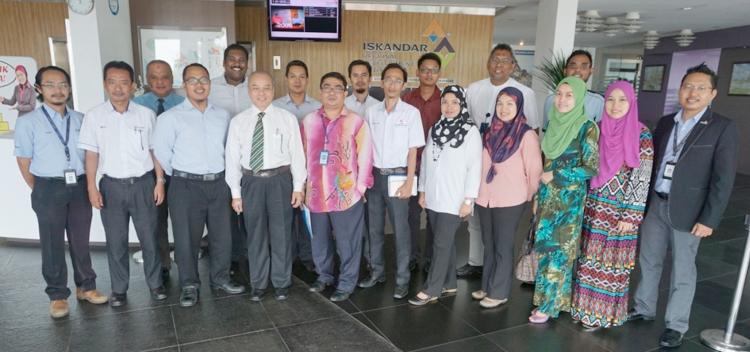
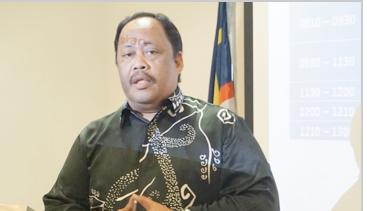

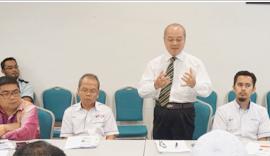
A brief report and summary of findings from the FGD is appended in Appendix E
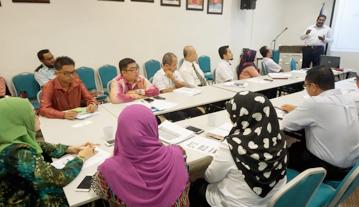 Photo 6 Participants of the Johor Bahru Conurbation FGD
Photo 10 Presentation of finding by Group 2 Leader, En Rosaidi
Photo 9 Dato Ir Lim Chow Hock responding to participant questions
Photo 8 Presentation on Introduction to IUWM by Ir C. Kamalesen
Photo 6 Participants of the Johor Bahru Conurbation FGD
Photo 10 Presentation of finding by Group 2 Leader, En Rosaidi
Photo 9 Dato Ir Lim Chow Hock responding to participant questions
Photo 8 Presentation on Introduction to IUWM by Ir C. Kamalesen
Integrated Urban Water Management In Peninsular Malaysia34
Photo 7 Opening Remarks by En Mohamad Saelal, Federal Commissioner IRDA
3.4 FGD – GEORGETOWN CONURBATION
3.4.1 Introduction
The FGD for the Georgetown Conurbation was held on 3rd June 2016. The programme was jointly organised with Universiti Sains Malaysia (USM) and Water Watch Penang (WWP). The FGD session was held at the School of Humanities, USM (see Photos 11 – 15).
3.4.2 Objectives
(a) To identify current best practices of IUWM in the Georgetown Conurbation with regard to urban water supply management.
(b To identify gaps, best practices and lessons learnt on IUWM in the Georgetown Conurbation with regards to urban water supply management.
(c) To obtain feedback and recommendations from the stakeholders in the Georgetown conurbation on urban water supply management (short, medium and long-term).

3.4.3 Outputs
Policies
(a) In term of policy, the main push is towards water security as Pulau Pinang depends on Kedah for most of its water supply (Ulu Muda Catchment). Water security relates not only to availability of clean water but also needs to look into improving water usage efficiency by water users.
(b) Policies in areas of trans-boundary water resources management, pro-longed dry spell management, and mandatory requirement for WSUD by developers need to be strengthened.
(c) The Penang Green Council, established by the State government in 2011, has been advocating the use of alternative water resources such as rainwater harvesting as a means to reduce water dependence on traditional sources. Other efforts from the state which are currently ongoing include the Cleaner Greener Penang Initiatives. All these tie in with efforts towards promotion of green and sustainable cities of which water sustainability forms an important component.
(d) Existing issues such as the nature of governance (local authorities not enforcing compulsory requirements for rainwater harvesting systems in new developments), low water tariff (which does not promote water conservation) and public awareness (public apathy) are obviating mass adoption, even as the cost of such systems have become more affordable.
(e) Under the WSIA 2006, water services are under the purview of the Federal government; however, water tariffs are under the State List. Current proposals to increase water tariffs by state water operators were not approved.
Issues and Challenges
(a) In Penang, most of the population live in the city. The existing water governance is therefore focussed on the adequacy of urban water supply and pollution, the mitigations of which seemed to be downplayed. Much of its water is piped in from Kedah and there are signs that potable water is inadequate. The rivers are also short and the flows low, causing the river pollution problem to be highly magnified, and the water cannot be used.
(b) Heavy water users per capita is common in Malaysia, with an estimated 250 L/day usage (Pulau Pinang recorded 291 L/day in 2015) whereas other countries have achieved usage levels as low as 115 L/day. A timely challenge is to reduce water use per capita in the state – 230 L/day by 2020 and so forth as a benchmark. One way of doing so is through providing incentives for water saving practices and penalising water wastage. This challenge also occurs to other states in Peninsular Malaysia too.
(c) Another challenge, which is not confined to Pulau Pinang alone but to all states in the country, is the low water tariff. There are reasons to believe that this is a major contributor to high water usage, which has led to water conservation not being a priority. Lack of awareness and perceived entitlement have given the public the perception that water is a basic right and should be free (Pulau Pinang has the lowest water tariff and NRW in Peninsular Malaysia), possibly resulting in non-prudent water uses. As long as water is not valued appropriately to take into account the cost of treatment and supply, water wastage will continue. At current water tariff rates, water operators and the government are actually subsidising consumers (average of RM1 per cubic meter operational cost versus 20 – 30 cents per cubic meter consumer fee).
Integrated Urban Water Management In Peninsular Malaysia 35
(d) Water quality is a major concern in cities. In Pulau Pinang, Kuala Lumpur, and Johor Bahru, the rivers flowing through the cities are polluted (some reaching Class IV) mostly due to industrial, STP and other urban discharges. The current standards adopted to control pollution sources may not be adequate or stringent enough to ensure clean water in urban rivers. Representatives from IWK have indicated that their plants abide by the Environmental Quality (Sewage) Regulations 2009 – Standard A or B for their discharge. They have, however, also indicated that there were issues of illegal sewage connections, which were not within their powers to enforce, indicating that SPAN should take the lead on such matters. DOE representatives also indicated concurrence that more stringent standards may be needed.
(e) Despite extensive public sewer network being laid for the Greater Georgetown catchment, there are still pockets of areas with private STPs not connected to the regional public sewer network. Some of these areas are in inner Georgetown such as Lebuh Chulia, Pengkalan Weld, Bagan Jermal and Tanjung Bungah. For ISTs, pour flush and private STPs in the Georgetown catchment, property connection programmes will need to be undertaken immediately, since the regional plants for the respective catchment are still under capacity.
(f) The wide usage of septic tanks and improper maintenance of private plants especially in private buildings of Georgetown have also contributed to water pollution. Pour flush or pit latrine and sullage water are also identified as a major cause to the water pollution as there are no proper treatment of wastes.

(g) Many of the existing old buildings built before the 1970’s in Georgetown are not treating sullage and not connected to the public sewerage system. Sullage flows into nearby drains and is a significant contributor to water pollution in Georgetown. In restaurants and eateries, it is common to wash plates and utensils next to the drain. Overall, considering that even newer developments have sullage discharge (especially from kitchens) into drains, this issue will require to be addressed urgently to maintain clean urban rivers.
(h) Developers not abiding by the DID’s ESCP requirements contribute to sediments and water pollution from run-off during heavy rains. A challenging area is to encourage voluntary adoption of green technology, provision of green areas and infrastructure, and adoption of green practices among developers. One method suggested was to offer incentives especially for small and medium developers to allow them to compete with the larger industry players.
Best Management Practices
(a) Perbadanan Bekalan Air Pulau Pinang (PBAPP) has managed to achieve one of the lowest NRW rates in the country. Similarly, SPAN has managed to carry out successful enforcement against water thefts, including successful prosecution of offenders. One method is to have utility readers report any issues to SPAN so that quick actions can be taken.
(b) There have been discussions on the water tariff structure since it is very low comparative to the cost of CAPEX and maintenance. This issue is being examined by another Task Force in ASM and will not be discussed here. Suffice to say that water tariff increase is an unpopular measure and will result in general populace dissatisfaction.
(c) Since Pulau Pinang is relying on Kedah, specifically the Ulu Muda Catchment for its water, BMPs for river basin management must be instituted to safeguard and ensure that there is consistent water supply for its use. So far, proposals for Kedah to charge Pulau Pinang to conserve the Ulu Muda Forest (ecosystem services funding) have not been accepted although the Northern Corridor Implementation Agency (NCIA) is currently acting as an intermediary between both states to come up with a potential win-win solution.
(d) Alternative water reuse can benefit the urban areas in Penang. An example is from SPAN that encouraged the use of treated wastewater from the Jelutong STP by the local council to water the plants in the council area. Industrial estates are also currently mandated to have WWTPs, with the treated effluent used as recycled water for non-potable use (e.g. for cooling water), utilising dual piping systems within large industrial estates.
Integrated Urban Water Management In Peninsular Malaysia36
(e) Operational mechanisms regarding water savings during pro-longed dry spells are among the BMPs to restrict water intensive activities during emergencies (no car washing, garden watering, etc.). There is a need to organise infrastructure for water rationing or distribution to consumers in case of water cuts.

(f) Awareness creation among the public to adopt water efficient infrastructure will be a continuous process. Practices can include mandating rainwater harvesting systems in new development (which at some levels have been implemented), providing incentives (e.g. tax rebates) for water efficient products and product labelling are some examples. Such practices must also be communicated effectively and the process made less bureaucratic to enable easy adoption by the public.
(g) A pilot project at Condo N Park by the Federal Government was carried out as a showcase project in water sensitive buildings. Six rainfall tanks (10,000 L) were installed while taps and fittings were retrofitted with water saving versions. Subsequently, 20 – 30% water use reduction was observed. This is a good example that other development could emulate, such as having dual flush system for toilets, dual piping for rainwater harvesting, and other WSUD design features.
(h) Consumer education is necessary to ensure that people adopt water saving practices and to know the importance of doing so. A current example is the Anugerah Sekolah Hijau organised by the State government to encourage students to adopt water saving features such as rain gardens and use of rainwater for non-potable uses.
(i) Rationalisation of the Georgetown sewerage catchment can be extended to public and private STPs together with property and sullage connections to the Georgetown regional STP, which will further reduce point source pollution from these facilities.
The FGD report and findings are attached in Appendix F.
Integrated Urban Water Management In Peninsular Malaysia 37



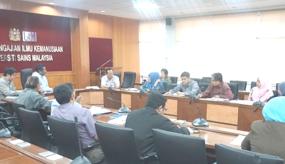
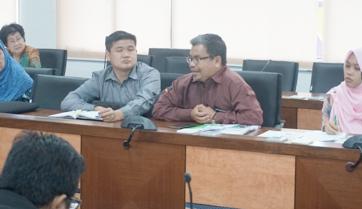
 Photo 11 Participants of the Georgetown Conurbation FGD
Photo 15 Participant from MPPP providing his views
Photo 14 Ir Kamalesen leading the FGD question discussions
Photo 13 Presentation on Introduction to IUWM by Dr Low Kwai Sim
Photo 11 Participants of the Georgetown Conurbation FGD
Photo 15 Participant from MPPP providing his views
Photo 14 Ir Kamalesen leading the FGD question discussions
Photo 13 Presentation on Introduction to IUWM by Dr Low Kwai Sim
Integrated Urban Water Management In Peninsular Malaysia38
Photo 12 Opening Remarks by Prof Chan Ngai Weng on behalf of USM
3.5 FGD – KUANTAN CONURBATION
3.5.1 Introduction
The FGD for the Kuantan Conurbation was held on 28 th July 2016. The programme was jointly organised with DID Negeri Pahang. The FGD session was held at DID Negeri Pahang, Bangunan KOMTUR, Kuantan (see Photos 16 – 20).
3.5.2 Objectives
(a) To identify current best practices of IUWM in the Kuantan Conurbation with regards to urban flood management.
(b) To identify gaps, best practices and lessons learnt on IUWM in the Kuantan Conurbation with regards to urban flood management.
(c) To obtain feedbacks and recommendations from the stakeholders in the Kuantan conurbation on urban flood management (short, medium and long-term).
3.5.3 Outputs
Policies
(a) There are adequate existing policies to manage urban run-off and flooding including: (i) Local Government Act 1976 (Act 171); (ii) Town and Country Planning Act 1976 (Act 172); (iii) Street, Drainage and Building Act 1974 (Act 133); and (iv) Local Authority [ Majlis Perbandaran Kuantan (MPK ) By-laws (Section 70A)].
(b) Land use planning has to abide by the state structure and locals plans. Currently, the Rancangan Tempatan Daerah Kuantan is being drafted.
(c) Flooding is usually managed by DID; however, the agency has limited power to carry out enforcement, but instead it provides technical inputs to other parties in the development approval process and/ or through its policies and guidelines e.g. MSMA2. DID depends on other agencies to carry out joint enforcement, e.g. with MPK.
(d) At present, there is no flood specific programme for the Kuantan Conurbation. Thus, there is an urgent need to develop a State Drainage and Flood Management Master Plan to address flooding.
Issues and Challenges
(a) A major challenge in the Kuantan Conurbation is flooding. Flooding covers both monsoonal and flash floods. Generally, the east coast of Peninsular Malaysia experiences annual monsoonal floods from storm surges and backflows of rivers. This issue will need to be addressed through integrated mitigations to reduce such incidences of flooding. It also need to take into consideration the land use and technical requirements, e.g. adequate platform levels above flood levels, proper drainage connections to the river or sea, adopt flood proofing technologies, etc.
(b) Inadequate sizing and capacity of drainage systems in coastal urban areas often exacerbate the flood problems. Most floods in Kuantan, which are localised such as those in Sg Isap (2007 & 2013), Kuantan Town (2011, 2012 & 2013) and Sg Pahang Basin (2014) are due to incapacity of the drainage conveyance system that are old, needing retrofitting or replacements, similar to the Georgetown conurbation.
(c) Inadequate funding for flood mitigation programmes may have resulted in its present dilemma. Funding so far is provided by the NRE and implemented by DID, while the local authority (MPK ) receives funding from the KPKT and State Secretariat Office (SUK ). As flooding is a perennial problem, funding is crucial to help resolve the flooding problem.
(d) Related to drainage is an issue highlighted by the participants, which is the manner in which many development projects do not provide adequate drainage infrastructure (retention ponds, drainage lines, monsoon drains, etc.). This has led to inadequate storage of stormwater and drainage to cater for the development in their area.
(e) Furthermore, most developers are discreet builders; they are only concerned with their own development and not any other surrounding development. Hence, they are not worried about cumulative impacts to existing neighbouring developed areas causing a lot of off-site issues such as sedimentation, water ponding and flooding in the surrounding areas. They do not seem to adopt innovative ideas to provide flood mitigation measures or green technology. It is therefore incumbent on DID and the local agencies to take up the initiatives.

Integrated Urban Water Management In Peninsular Malaysia 39
Best Management Practices
(a) A firm urban water management (including on flood management) within the river basin or floodplain management programmes needs to be put in place to provide the direction on urban flood management. Among the most urgent requirements are to develop a detailed Drainage and Flood Management Master Plan for Kuantan incorporating a flood risk map, to assist in planning and implementation of flood mitigation works. Flood warning system for Kuantan is proposed as an immediate measure for flood preparedness.
(b) For new development, infrastructure provision must be adequate and built first before moving on to other project development. Strict enforcement of the local authorities’ requirements should be practised. Provision of run-off controls such as flood retention ponds and drainage systems are essential in preventing severe flooding.

(c) MSMA-2 has detailed the requirements for flood mitigation, which includes both structural and non-structural measures. WSUD is also featured within, but not taken up by the developers. Natural features such as river corridors should be preserved or enhanced to act as natural buffers and flood mitigation.
(d) More funding is needed to tackle the flood issues. Under the 11th Malaysia Plan, it is estimated that half a billion ringgit will be required for flood mitigation works for the Kuantan Conurbation. This will cover the capital costs for new infrastructure works, and also maintenance of existing infrastructure. One issue currently is that retention ponds by developers are supposed to be handed over to the local authority for maintenance, but there are inadequate funds to do so.
(e) During floods, the National Disaster Management Agency (NADMA ) is the main authority in the coordination of flood rescue and rehabilitation efforts. They will coordinate with the other agencies such as the police, Fire and Rescue Services (BOMBA), medical teams, Civil Defence Department ( JPAM), local authorities, NGOs to assist the public.
(f) One area to improve upon is awareness creation and capacity building of the public on how to manage and adapt to floods. This can be carried out by the Majlis Jawatankuasa Tindakan Daerah (MJTD) at the district level, working with the Jawatankuasa Kemajuan dan Keselamatan Kampung (JKKK). Besides that, NGOs can also play an important role to assist the government in flood preparation programme for the public, including holdings workshops, training and capacity building.
(g) Currently, no active research on flood management and adaptations are being pursued by the local institutions. This is one area that research institutes such as Universiti Malaysia Pahang (UMP) can play an active role.
The report for the FGD is attached in Appendix G.
Integrated Urban Water Management In Peninsular Malaysia40

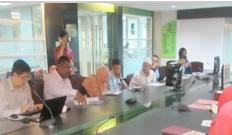
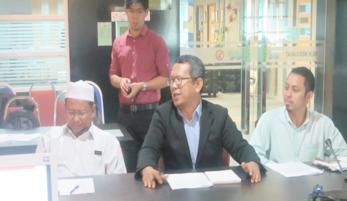
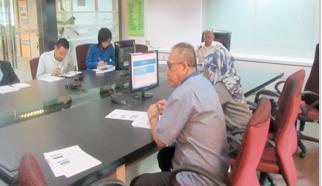

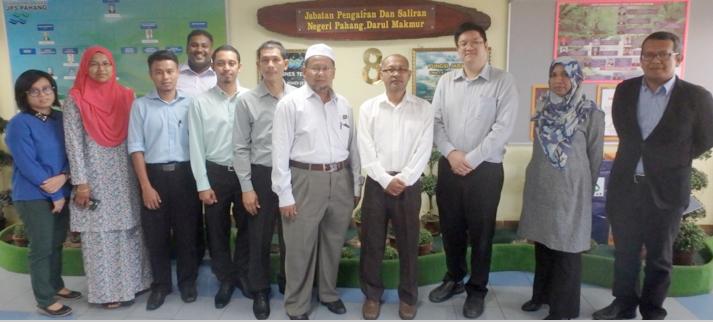 Photo 16 Participants of the Kuantan Conurbation FGD
Photo 20 Participant from UMP providing inputs on local practices in Kuantan
Photo 19 Ir Kamalesen addressing to a question raised by a Participant
Photo 18 Ir Kamalesen introducing ASM and IUWM to the participants
Photo 16 Participants of the Kuantan Conurbation FGD
Photo 20 Participant from UMP providing inputs on local practices in Kuantan
Photo 19 Ir Kamalesen addressing to a question raised by a Participant
Photo 18 Ir Kamalesen introducing ASM and IUWM to the participants
In
Photo 17 Opening remarks from En Mohamad Razali Malaysia 41
Integrated Urban Water Management
Peninsular
FGD – KUALA LUMPUR CONURBATION
3.6.1 Introduction

The FGD for the Kuala Lumpur Conurbation was held on 26th August 2016. The programme was jointly organised with DID Malaysia. The FGD session was held at DID Ampang, Kuala Lumpur (see Photos 21 – 25).
3.6.2 Objectives
(a) To identify the current best practices of IUWM in the Kuala Lumpur Conurbation with regards to urban water pollution control.
(b) To identify gaps, best practices and lessons learnt on IUWM in the Kuala Lumpur Conurbation with regards to urban water pollution control.
(c) To obtain feedback and recommendations from the stakeholders in the Kuala Lumpur conurbation on urban water pollution control short, medium and long-term).
3.6.3 Outputs
Policies
(a) The Greater Klang Valley comprises the State of Selangor and the Federal Territory of Kuala Lumpur. The Kuala Lumpur Conurbation has several legislations to manage water resources and city planning including: (i) Federal Territory (Planning Act) 1982 (Act 267); (ii) Local Government Act 1976 (Act 171); (iii) Water Enactment 1920 (Act 418); and (iv) Federal Capital Act 1960 (Revised 1977) (Act 190). Selangor on the other hand is governed under the Selangor Waters Management Authority (LUAS) Enactment 1999.
(b) The main thrust for water management in the country has been based on IWRM concepts of which subsets include IRBM, Integrated Lake Basin Management (ILBM) and Integrated Coastal Zone Management (ICZM).
(c) Development planning for Kuala Lumpur is in accordance with the Kuala Lumpur Structure Plan 2020 and Draft Kuala Lumpur City Plan 2020 (yet to be gazetted). For Selangor, the structure and local plans are the main developmental guidance documents.
(d) The Sg Klang River Basin, which flows through Kuala Lumpur has an IRBM plan drafted out covering the main focus areas of; (i) Ensuring adequate water for all stakeholders; (ii) Ensure clean water availability; (iii) Management of floods; and (iv) Ecosystem management.
Issues and Challenges
(a) Development in Kuala Lumpur and Selangor has led to the integration and meshing of both state and federal territory into a large metropolis. This has led to complex interactions and overlapping of jurisdiction in terms of water resources management, as Sg Klang and its tributaries flow through both Selangor and Kuala Lumpur, yet Kuala Lumpur depends on Selangor for most of its water supply. Among government institutions involved in water management include LUAS, DID, DOE, Dewan Bandaraya Kuala Lumpur (DBKL ) and other local municipal councils. One such example of institutional management is in carrying out the River of Life (ROL ) programme, which requires intergovernmental coordination between both federal and state bodies for it to work.
(b) Kuala Lumpur is unique as a Federal Territory as it is located amidst the State of Selangor. While Selangor has already moved to adopting a statewide legislative and institutional framework for water resources management in the form of LUAS, Kuala Lumpur does not have specific legislation and institution to manage water resources per se, currently mostly under the jurisdiction of DBKL. This leads to issues of coordination and alignment of policy, legislation and enforcement within the shared Sg Klang Basin which cuts across both administration. This presents a need to have greater cooperation and coordination of efforts between the two especially for urban areas, to address transboundary pollution since the headwaters of most rivers originate within Selangor before flowing into Kuala Lumpur and out again to Selangor.
(c) Kuala Lumpur is also a historical city, in which planning occurred mostly on an ad-hoc manner in the past, making it difficult for current city planners to rectify problems such as inadequate infrastructure, especially in the older parts of the city. This has often led to flash floods due to inadequate drainage and constriction problems. Thus, a comprehensive city plan is needed to address these issues and also to put into perspective the guidelines for new development areas.
Integrated Urban Water Management In Peninsular Malaysia42
(d) One of the main challenges in the Kuala Lumpur Conurbation is water pollution. Many of the participants felt that the current pollution discharge limits are not stringent enough to address river water pollution and without more stringent limits, achieving Class IIB water quality for Sg Klang as espoused in the ROL programme cannot be met. Likewise, pollutants such as sullage, stormwater run-off and O&G still pose problems.
(e) Older areas of Kuala Lumpur are still served by traditional sewage treatment systems such as palong (soak away) and ISTs. Improper closure exposes risk of groundwater contamination and there are difficulties to integrate and connect all these areas to the central sewage treatment systems.

(f) Sullage is another issue mandated to be connected to discharge into the sewer system by SPAN. However, many developments could not comply with the requirement and residents often alter their houses (toilets and kitchens) without submitting building plans or having illegal connections directly into the drainage system resulting in water pollution. Commercial sullage such as from car washes, 24-hour laundry centres and restaurants are not adequately addressed by the local authorities or complied with the DOE’s requirements.
(g) Garbage at night markets left uncollected overnight exposes a risk of leachate and polluted run-off. While the traders pay a clean-up fee, they take no initiative to ensure cleanliness of their own stalls and leave it to the contractors to manage. This also ties in with a need for public education and inculcating civic responsibilities of waste generators to maintain the cleanliness of their own premises.
(h) The O&G trap programme is ongoing but many food operators are still not implementing the mandatory requirement or do not maintain the traps properly leading to direct discharge to the drains and contamination of the river water. Stricter enforcement is therefore needed.
(i) Enforcement has to be carried out stringently to address the various violators. One way to move forward is to have joint enforcement activities between the various agencies, local authorities and also between states/federal territories in an effort to curb water pollution within the city centre. Another is to shift the current enforcement towards selfregulation to the polluters.
(j) Public participation is still low in areas of pollution control in rivers that run through the city. There is a pressing need to educate the public to reduce polluting practices and to be actively involved in river management programmes. Only through this will they feel they have a stake in river care in the city, rather than leaving it all to the government agencies. Lack of funding for public initiatives however, has restricted community programmes from being carried out effectively.
Integrated Urban Water Management In Peninsular Malaysia 43
Best Management Practices
(a) In terms of IUWM, one of the BMPs is to clean up the rivers that run through Kuala Lumpur so that the city can be liveable. In this regard, the ROL programme is a major river- and city-based initiative to ensure that the water quality of Sg Klang and its tributaries achieve Class IIB by the year 2020. It covers both the Federal Territory of Kuala Lumpur (under DBKL) and the urban areas of Selangor such as the municipalities Majlis Perbandaran Selayang (MPS) and Majlis Perbandaran Ampang Jaya (MPAJ) in an effort to curb urban water pollution so as to enhance the urban water conservation.
(b) In terms of coordination for river cleaning and conservation of urban waters, the ROL joint committee is a good example of a platform which allows the various government agencies to be represented in the programme. For community engagement, the Local Agenda 21 (LA21) is a good platform where the local authority can reach the communities in the city and urban areas.
(c) Among the BMPs are pollution inventories of the point and non-point sources of pollution within the Sg Klang Basin to target areas to implement structural and non-structural measures. For the Kuala Lumpur Conurbation, these included water polluting industries, STPs, workshops, restaurants, residential areas, squatters, development areas, wastes, etc.
(d) The rationalisation of all sewerage systems is being carried out with the individual STPs closed and sewage channelled into a centralised sewage treatment system, carried out by the Sewerage Services Department (JPP) and IWK under KeTTHA initiative. At present, at least 27 plants have been closed. With regards to sullage, SPAN has legislated both sewage and sullage to be channelled into a STP to be treated, but implementation of this requirement is still low.
(e) To improve utility collection especially for sewerage bills, combined utility bills have been proposed and a pilot test is being carried out in the Federal Territory of Labuan (sewerage and water bills). It is anticipated for this scheme to be emulated in Peninsular Malaysia in the future. Other countries include up to 10 different utilities within a common billing.
(f) Gross Pollutant Traps (GPTs) and drainage receptors such as log booms and trash rakes have been constructed in a number of key sections of urban rivers, and this practice has proven to be effective in reducing floatables and wastes in the rivers by 50%.
(g) In terms of promoting green development, JPBD has issued a Green Neighbourhood Guideline to
require the provisions of green areas and WSUD in any future development projects. Many of these are also included in the MSMA-2 requirements for drainage controls and have been incorporated into the structure and local plans requirements.
Putrajaya is a good example of a planned city that has taken into consideration the environmental needs by incorporating green features throughout its development, which other cities can emulate.
(h) There have been controversies as to whether urban rivers can be maintained in their natural state or be converted into concrete monsoon drains. Because of lack of space in urban areas and flooding in the past, many urban sections along Sg Klang and its tributaries, such as Sg Bunus, have already been chanellised with very little natural habitats left. Leaving rivers in its natural state with riparian areas on either side will help create natural areas for wildlife, while providing aesthetic areas for recreation. However, most urban river sections generally do not have this luxury, and therefore, urban parks have to be created to take its place.
(i) In terms of enforcement, top-down and bottom-up approaches are required in water conservation, especially during pro-longed dry spells where water rationing is the norm. Firm leadership and financial support are also important to ensure urban water conservation programmes are carried out effectively. The public is also an important stakeholder and must be included in the urban water management and implementation programme for it to be effective.

(j) Education and awareness creation is key to build up a civic society that is actively concerned about the environment and urban waters. This can be done by integrating the necessary education modules into the country’s education curriculum, as well as involving students in extracurricular activities such as River Ranger Programs. A good example is the civics programme in Japan, which requires student to be actively involved in river care to instil a sense of communal ownership of public facilities.
(k) Both government agencies and non-governmental organisation will need to play a part in mobilising the public to be active in urban river management programmes too. The ROL Public Outreach Program (POP) is one such example that can be replicated in other urban rivers. The programme should be led by local leaders to ensure sustainability.
The FGD report is attached in Appendix H
Integrated Urban Water Management In Peninsular Malaysia44


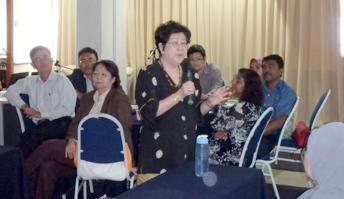

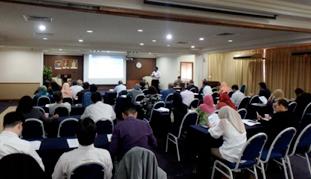
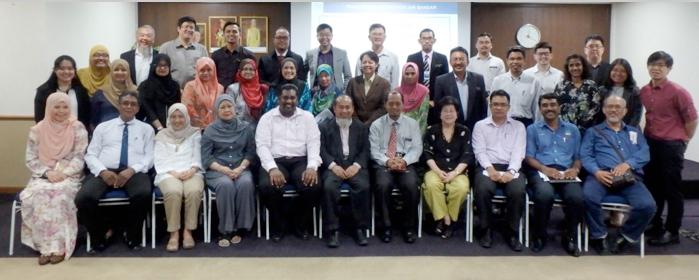 Photo 21 Participants of the Kuala Lumpur Conurbation FGD
Photo 25 Dr Low thanking the participants during closing
Photo 24 Datin Zaharah facilitating Group 2 to discuss their Questions
Photo 23 Ir Kamalesen introducing ASM and IUWM to the participants
Photo 22 Opening remarks by YBhg Dato’ Ir Dr Nasir, Timbalan Ketua Pengarah II DID Malaysia
Photo 21 Participants of the Kuala Lumpur Conurbation FGD
Photo 25 Dr Low thanking the participants during closing
Photo 24 Datin Zaharah facilitating Group 2 to discuss their Questions
Photo 23 Ir Kamalesen introducing ASM and IUWM to the participants
Photo 22 Opening remarks by YBhg Dato’ Ir Dr Nasir, Timbalan Ketua Pengarah II DID Malaysia
In
45
Integrated Urban Water Management
Peninsular Malaysia
3.7
2ND STAKEHOLDER CONSULTATION MEETING
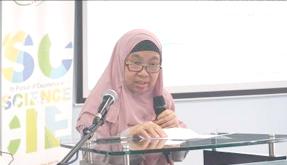

3.7.1 Introduction
The 2nd Stakeholder Consultation on IUWM was held on 28nd February 2017 at the Function Hall, ASM, Level 20, Menara MATRADE in Kuala Lumpur, Malaysia. The consultation meeting was attended by approximately 40 participants representing consultants, NGOs, government bodies, and institution of higher learning in Peninsular Malaysia (see Photos 26 – 30).
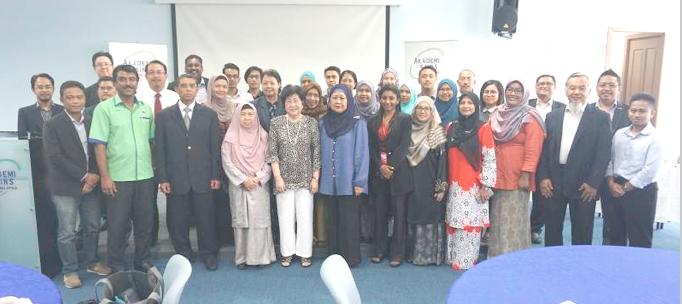
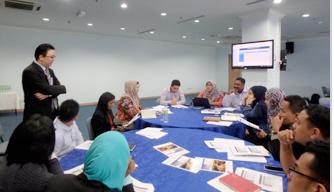
The 2nd Stakeholder Consultation Meeting provided an opportunity for the IUWM Task Force to present the findings of the approved Draft Final Report for stakeholders review and final inputs. These inputs were then incorporated into the report.
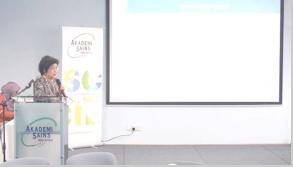
The programme report is attached as Appendix I
3.7.2 Objectives
(a) To present the study findings to the stakeholders to obtain feedback and comments.
(b) To obtain views on policies and plans for IUWM in the respective agencies.

3.7.3 Outputs
(a) The stakeholders invited were agreeable to the proposed strategies and action plans and contributed additional feedbacks to be incorporated for the final report.
Photo 27 Opening remarks by Dr Salmah Zakaria, FASc, Chairperson of the ASM Water Committee
Photo 29 Ir Kamalesen presenting the findings of the IUWM Study
Photo 28 Overview of the IUWM Study by Dr Low Kwai Sim, FASc
Photo 30 Breakout Session among the participants to discuss on the findings
In
46
Photo 26 Participants of the 2nd Stakeholder Workshop for IUWM
Integrated Urban Water Management
Peninsular Malaysia


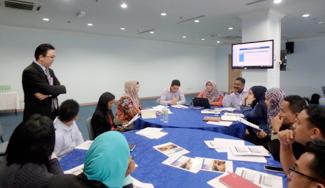


 Photo 26 Participants of the 2nd Stakeholder Workshop for IUWM
Photo 30 Breakout Session among the participants to discuss on the findings
Photo 29 Ir Kamalesen presenting the findings of the IUWM Study
Photo 28 Overview of the IUWM Study by Dr Low Kwai Sim, FASc
Photo 26 Participants of the 2nd Stakeholder Workshop for IUWM
Photo 30 Breakout Session among the participants to discuss on the findings
Photo 29 Ir Kamalesen presenting the findings of the IUWM Study
Photo 28 Overview of the IUWM Study by Dr Low Kwai Sim, FASc
Integrated Urban Water Management In Peninsular Malaysia 47
Photo 27 Opening remarks by Dr Salmah Zakaria, FASc, Chairperson of the ASM Water Committee
IUWM RECOMMENDATIONS & IMPLEMENTATION STRATEGIES
4.1 INTRODUCTION
The IUWM study sets out to evaluate the four major water resources sector that may impact on urban waters in terms of water supply, water pollution, flood management and development controls.
Through literature reviews and inputs provided by stakeholders during the various workshops and FGDs, the BMPs adopted by the four major Conurbations or in other countries were identified and assessed as shown in Table 4.1. These are also in line with the IUWM related recommendations made by ASM in the Transforming the Water Sector: National Integrated Water Resources Management Plan – Strategies and Road Map.
Table 4.1 BMPs for IUWM Implementation for the Different Water Sectors
Water Sector BMPs
Water Supply Wastewater Recycling/Reuse

• •
Reuse treated wastewater [industry/STP] for non-potable use (industrial process water/landscape watering).
Cost savings as treated effluent cost could be lower than potable water supply
Development of Alternative Water Sources
• • •
Identify potential downstream reservoirs that can be developed as new water sources for supplies to cities, e.g. ex-sand mining ponds, natural lakes, etc. Where necessary, barrages may need to be built to address saline intrusion.
Study and identify potential urban areas for groundwater abstraction and/or recharge.
Desalination as an option for coastal cities and islands.
Rainwater Harvesting
• • • Water Efficient Products
Mandatory rainwater harvesting and utilisation system in cities for residential, institutional, commercial and government offices.
Groundwater infiltration and recharge using stormwater run-off. Underground reservoir storage for rainwater capture.
Incentives for use of water saving and/or water efficient products.
Manufacturer water labelling scheme, e.g. SPAN’s Skim Pelabelan Produk Cekap Air (SPPCA).
Dual flush toilets, taps and resistor valves, etc.
Reduction of NRW through pipe replacement and maintenance programme and enforcement on water thefts.
Green Technology Adoption
• • •
Decision Management System Tools to be employed – National Water Balance Management System (NAWABS).
Dual-use ponds as non-potable supply. Improvement in water efficiency.
• • • •
Integrated Urban Water Management In Peninsular Malaysia48
Water Sector BMPs

Water Pollution Artificial Wetlands
• •
Artificial wetlands and green buffers as filters for run-off, support aquatic life and improve aesthetics.
Urban lakes and ponds to be landscaped and retrofitted with ecological treatment systems to function as recreational areas for nearby urban residents, while reducing pollutants.
Ecosystem Services Regulations
• •
Protection of important watershed for water supply and introduction of mechanism for payment for ecosystem services (PES).
Rehabilitation of urban waterways to bring back ecological functions.
Urban Stormwater Management
• •
Disaster Management
Manual
(MSMA)
Guidelines for new development on drainage and run-off control. So far, no legal backing to enforce its adoption by developers by the DID.
Very little enforcement of ESCP or other similar control measures by various government agencies during construction.
Advanced Treatment Systems
•
• •
Develop and implement the NSCP for both federal and state levels.
Adoption of wastewater treatment system for point source pollution, e.g. industries, STPs, etc. Usage of anionic polymers or equivalent in the control of erosion and sediments during construction.
Total Maximum Daily Load (TMDL) Programme
•
• •
Total Maximum Daily Load (TMDL) as a mechanism to determine pollution carrying capacities of rivers.
Pilot study under NRE currently being implemented to expand to other critical waterways in phases.
Pollutant discharge standards need to be revised to ensure that water quality is preserved.
WSUD
•
Adoption of recommendations in MSMA-2 to provide WSUDs in development to manage stormwater and provide ecological functions in urban areas.
Controlled Drainage System
• •
Dual-function channels allow for removal of excess water as well as function as irrigation canals.
Maintain water table as sub-surface drainage to maintain greenery and landscapes.
Climate Change Adaptations
• •
•
•
Increase research on climate change impacts on coastal flooding and sea level rise. Preparation of pro-longed dry spell management plan to ensure sufficient water for all consumers during such periods.
Development of alternative water storage in case of emergencies.
Tougher laws and restriction on water intensive actives during pro-longed dry-spell.
Technology – Flood Forecasting
•
Decision Management System Tools to be employed – Program Ramalan dan Amaran Banjir Negara (PRABN) by DID and MetMalaysia’s Numerical Weather Prediction (NWP) with spatial resolution of 1 km and 3-day lead time.
Integrated Urban Water Management In Peninsular Malaysia 49
Water Sector BMPs
Development Controls
Institutional and Legislation Review
•
• •
The Federal, State and Concurrent Lists share some form of water resources control, in aspects of land use, forestry resources, water resources, water and sewage treatment and distribution, pollution management, irrigation and drainage, flood mitigation, etc.
The National Water Resources Council (NWRC) acts as the highest level of governmental policy making relating to water resources management in the country.
Development of IRBM Plans is important to properly manage water resources and should be extended to all river basins in Peninsular Malaysia.
Urban Watershed Management
•
• •
Urbanisation changes land usage, which results in greater run-off volumes because infiltration and natural storage capacity is reduced. Land use planning is essential in ensuring that watersheds are protected and that natural features are not degraded such as river corridors. Public awareness through campaigns or POPs are important to enable long-term sustainable management of the river basin.
IWRM BMPs Guidelines developed by DID are example of awareness and engagement materials.
Awareness and Capacity Building
• •
Implement programmes to educate the public and improve capacity in water resources management.
Incorporate elements of water resources management into education.

Implementing the BMPs will require a revisit at our governance structure to ensure that the appropriate enabling environments are present to effect meaningful change. As detailed in Chapter 3, various issues and challenges were identified that needs to be addressed, else any efforts to implement IUWM will not be successful. Similarly, institutional roles need to be defined and management tools made available to safeguard our water resources.
The proposals set out in the NWRP and the Rang Undang-undang (RUU) on Water Resources are applicable in the IUWM context as they encompass the entire ambit of water resources management in the country. Generally, IUWM is a subset of IWRM.
Table 4.2 details the recommendations derived from the study to push ahead towards IUWM implementation in Peninsular Malaysia.
Management In Peninsular Malaysia50
Integrated Urban Water
1
Objective 2 Review any related urban legislations and guidelines pertaining to water pollution, flooding and general environmental management in cities
Table 4.2 IUWM Recommendations
Table 4.2 IUWM Recommendations
Table 4.1 BMPs for IUWM Implementation for the Different Water Sectors
Objectives Proposals(s)/ Recommendation(s)
Enabling Environment
(a) Adopt Elements within NWRP into IUWM for Urban Areas
The Majlis Sumber Air Negeri (MSANg)/State Water Management Agency (SWMA) shall conduct state-level dialogues and workshops to create awareness of the NWRP, specifically on urban water management, so as to identify and develop the specific framework for federal/state level partnerships to implement the Policy which will include IUWM initiatives for each state in Peninsular Malaysia.
(b) Development of Federal/State Level Partnerships to Implement NWRP
This IUWM initiative shall be supported by NRE and KPKT to push for greater engagement with the individual states in order to realise the partnership framework.
The MSANg/SWMA shall develop specific state-level urban water management policies and programmes based on the three strategies identified in the NWRP’s Strategic Targets 15 and 16:
1. Identify stakeholders and clarify roles as well as responsibilities
2. Develop means and measures for consultation
3. Determine means, measures and approaches for collaborative governance
(c) Formulation of NSCP at National and State Levels
SPAN is in the midst of formulating planning polices, strategies and action plans under the NSCP to set the way forward for proper sewerage management. Priority for sewerage infrastructure shall focus on urban centres due to high potential of water pollution (high Population Equivalent). At the same time, it is necessary to retrofit older systems in urban areas with higher efficiency treatment systems.
Strategies to improve sewerage services (by IWK and municipalities) in regards to pollution control, shall also involve reducing nutrients in the discharge (phosphorus and nitrogen) that cause eutrophication.
There is also a recommendation for mandatory desludging of septic tanks, especially with regards to payment schemes, via polluters pay principle.
(a) Enactment and Implementation of the RUU on Water Resources
The MSANg/SWMA shall work with the relevant government agencies to get the RUU on Water Resources enacted by the national legislature. Elements and aspects of IUWM should be incorporated into the RUU on Water Resources. Once enacted by the national legislature, the MSANg/SWMA will have to work closely with relevant state agencies to get it adopted by the state legislature.

Objective
Streamlining the water resources management at federal and state levels to focus on urban waters
Integrated
Management In Peninsular Malaysia 51
Urban Water
Objectives Proposals(s)/ Recommendation(s)
Enabling Environment
(b) Review of the Streets, Drainage, and Building Act 1974
Alignment to the Transforming the Water Sector National IWRM Plan Strategies and Road Map, must see the Streets, Drainage, and Building Act 1974 be reviewed to incorporate IUWM principles and practices to ensure more holistic management of urban drainage and waterways.
It should be a mandatory requirement for developers to implement MSMA for construction sites and to enforce the requirements so as to ensure adoption of and adherence to the requirements, specified by the government agencies to prevent flash flooding.
Requirements related to sustainable management of water resources shall be incorporated into development planning documents and plans with regards to water supply and wastewater treatment utility provisions, pollution discharge and the enhancement of protection of urban waterways, water bodies and drainage.
(c) Implement Programmes to Address Non-Revenue Water
To provide clear guidelines and plans to relook at the entire urban water supply infrastructure and to implement specific programmes for old pipe replacement, monitoring systems, etc.
Objective 3
Ensure adequate financing is available for IUWM implementation
(a) Financing Model for Water Resources Management
The Federal Government should provide support to the state governments in Peninsular Malaysia to assist them in setting up the MSANg/SWMA and to implement urban water management programmes. The details of the financing model need to be developed, taking into account the pricing model that is adopted for water resources.
(b) Pricing Model for Water Resources

The Review of the National Water Resources Study (NWRS) (DID, 2012) has recommended a uniform pricing and tariff regime for the water services sector to be adopted, after taking into consideration the all funding requirements for management activities required to sustain water resources and the environment in river basins. Although different states have their own supply and service providers, an equitable uniform price and tariff structure for water supply will be much easier to enforce.
A set of guiding principles for the water pricing that takes into consideration water resources and the environment is needed. It is also important to provide for water recycling/reuse as part of the initiatives for urban water management.
(c) Develop Public-Private Partnerships in Water Resources Sector
Incentives and collaboration between the public and private sectors to be enhanced to further improve the current urban water resources sector, while ensuring the rights and needs of the public are taken care of towards meeting the countries’ socio-economic targets and goals.
(d) Pricing Model for Sewerage Infrastructure and Services
SPAN to set up suitable pricing and cost sharing mechanisms with developers for government/developers’ driven sewerage infrastructure. Pricing for sewerage needs to be increased to ensure it is realistic to cover the costs of infrastructure and maintenance. Polluters pay principle should also be considered with the cost borne by the generating premises.
Table 4.2 IUWM Recommendations Integrated Urban Water Management In Peninsular Malaysia52
Objectives
Objective 4
Review institutional roles for federal and state with regards to urban water management
Proposals(s)/ Recommendation(s)
Institutional Roles
(a) Enhancement of Federal Institutional Structure for Water Governance
To implement the proposed changes in water governance, new federal institutional structure needs to be set up, consisting of three levels:
(i) (ii) (iii) (iv)
NWRC – existing.
NWR Secretariat – The existing NWR Secretariat is currently co-shared between the NRE and KeTTHA. Since water resource is part of natural resources, it is proposed that the Secretariat be housed only under the NRE, as it is responsible for natural resources management.
National Water Resources Department (NWRD) – This is a new department that has been proposed to implement the water resources management functions described in the RUU on Water Resources.
As urban areas are the norm, it is proposed to include a new section in the NWRD specifically for urban waters.
(b) Review of Existing Institutional Arrangements in all States
Currently, only three states in Peninsular Malaysia have an equivalent MSANg/SWMA. They are Kedah (Kedah Water Management Board); Selangor (Selangor Waters Management Authority) and Pahang (State Water Regulatory Body). The rest of the states have water service agencies and structures, except Perlis, which is still under the line agency of the Water Supply Department (JBA), and the two Federal Territories in Peninsular Malaysia. A state institution is necessary to implement any of the comprehensive urban water management policies and programmes to ensure conformity with the aspirations of the NWRP.
(c) Creation of MSANg/SWMAs
DID was proposed by the stakeholders in the NWRS’s national Stakeholder Consultation Workshops, to become the NWRD in the form of MSANg/SWMAs. Thus, a detailed outlook review of DID’s current functions and benchmarking of its functions against an ideal Water Resources Functional (WRF) Model was carried out in the NWRS, to support the realignment of DID to be an effective NWRD in future.
(d) Alignment of Functions and Responsibilities with the NWRP and RUU on Water Resources
The WRF Model lists the six main functions for the NWRD:
• Water Resources Assessment
• Water Resources Sustainable Integrated Management
• Water Resources Allocation and Regulation
• Water Hazard Management
• Water Resources Technical and Scientific Support
• Intra-, Inter- and International Technical Water Resources Services

Table 4.2 IUWM Recommendations Integrated
Management In Peninsular Malaysia 53
Urban Water
Objectives Proposals(s)/ Recommendation(s)
Institutional Roles
Objective 5
(a) Adoption of River Basin Management Plans to Address Urban Water Issues
Once the RUU on Water Resources has been enacted, the MSANg/SWMAs should work closely with the KPKT and the local councils to support urban water resources management objectives and implement programmes to address urban water resources issues.

Specific River Basin Management Plans shall be developed in line with the NWRP incorporating elements of urban water management into the respective state structures and local plans in order to streamline urban development, taking into account sustainable water resources management.
Strengthen development controls by integrating urban planning when developing water resources or in river basin management (b) States to Set-up RBMC to Improve Technical Capacity and to Monitor Implementation of River Basin Management Plans
The blueprint for the development of an IRBM plan has already been developed by DID. However, the implementation and enforcement of these plans will have to be carried out by the respective states (through MSANg/SWMAs) since land and water resources are under their jurisdiction. Funding for such venture can be through the federal government.
The development controls have to adhere to the policies, guidelines and authority requirements, e.g. MSMA implementation for construction sites. The MSANg/SWMAs shall facilitate the coordination and implementation of the development controls, recommended strategies and actions plans for the river basin, and supported by the relevant agencies. Priority shall be given to major urban basins.
Respective River Basin Management Committees (RBMC) can be setup for each urban river basin to assist in monitoring and implementation of IRBM plans. The Committees can work with the proposed Federal NWRD to update the developed plans, as and when necessary.
(c) Safeguarding and Improving Urban River and Lake Biodiversity
It is recommended that a strategy and BMP guidelines for biodiversity conservation in urban river management be developed. Also, there is a need to enhance the capacity for biodiversity conservation in urban river management at the national level.
Studies should be undertaken on methods to improve urban biodiversity as a means to create appropriate urban habitats for flora and fauna, rainwater capture, reduce urban heat effects and as functional recreational and green space for the public. Examples include pocket parks, green roof, greenways, etc. Recommended to provide multiuse green space of between 10% to 20% of total built-up areas of the urban cities.
Inputs of sewage and sullage have led to eutrophication of many of the urban lakes, which reduce the recreational values of such lakes. Urban discharge management will need to be improved upon with changes to make good the lake hydrological and ecological systems, e.g. inclusion of wetland cells to assist in water pollution control.
Table 4.2 IUWM Recommendations Integrated Urban Water Management In Peninsular Malaysia54
Objectives Proposals(s)/ Recommendation(s)
Institutional Roles
(d) Land-use Planning and Controls for Urban River Management
The following is a list of specific land use planning and control considerations to improve urban river management:
(i) (ii) (iii) (iv) (v) (vi) (vii)
Gazetting of river reserve and zoning of flood-prone areas. Implement the guidelines on development in low-lying areas developed by PLANMalaysia.
Infrastructure works done by other government agencies, such as Public Works Department (JKR), should take into consideration flood and water pollution impacts. Thus, JKR should refer to DID and DOE when it is designing its infrastructure works. All government agencies projects on urban areas should comply with the guidelines developed by DID, DOE and PLANMalaysia.
All flood detention ponds should be gazetted in order that the flood detention capacity function can be protected.
Land use planning by PLANMalaysia to incorporate sewerage development plans set-up by SPAN with consideration of urbanisation, population density, assimilative capacity of receiving water body (river).
SPAN to set up sewerage planning zone areas and Land and Minerals Office (PTG) to undertake gazetting of sewerage reserve land.
Objective 6
Ensure adequate and equitable water allocation among urban stakeholders
(a) Establishment of a Single State Agency to Ensure Proper Coordination and Allocation of Urban Water Resources
Recommendations as per Objective 4 to be realised. For transboundary or shared urban river basins (e.g. Parit Buntar/Bandar Baru), the MSANg/SWMAs shall have representatives from the different states within its setup, subject to the legal provisions in the Federal Constitution.
(b) Encourage Alternative Water Resources Development

Alternative sources of water need to be studied and developed to supplement existing urban sources. Sources with high potential to cater to the needs of the urban population to be utilised in a sustainable manner.
These can include abstraction of groundwater with aquifer recharge (DBKL is exploring potential sources for Kuala Lumpur); establishment of downstream reservoirs which can capture flood flows (HORAS in Sg Selangor); construction of barrages for coastal reservoirs (Marine Barrage, Singapore) and desalination for coastal cities and islands (case in point to meet water demand from Forest City development in Johor).
(c) Adopt Wastewater Reuse Strategies
There is a need for water recycling strategies, i.e. reuse of treated effluent (resource recovery) for direct non-potable use and for indirect potable use (such as mixing with water in reservoir) for implementation by KeTTHA.
Table 4.2 IUWM
Urban
Management In Peninsular Malaysia 55
Recommendations Integrated
Water
Objectives Proposals(s)/ Recommendation(s)
Institutional Roles
(d) Improve Water Use Efficiency and Reduce Water Consumption

There is a need to reduce NRW in urban cities through optimal legal/financial instruments and mechanisms for cost recovery of utility services and for equitable tariff setting. Certain states (i.e. Pulau Pinang) have managed to reduce their NRW significantly, improving cost savings and reducing losses. According to the ASM Task Force on Water Demand Management and the Water and Wastewater Management, raising competence of O&M personnel at all levels of water management is equally important to improve efficiency in water management.
Consumer use of water will need to be addressed and benchmarked against water consumers in other countries. Malaysian water consumers still utilise large amounts of water per capita, due to the low water pricing.
Use of water efficient fittings and equipment can assist in lowering NRW and wastage. Consumers uptake of efficient equipment and fittings could be encouraged through incentives, water labelling scheme, and consumer education.
(e) Safeguarding Catchments
Conserving the catchments that supply water to reservoirs is an important part of urban water security. While most catchments are given protection through gazettement, they are threatened by development which degrades the forests, impairing their natural functions. Transboundary catchments such as in the case of Pulau Pinang and Kedah which depend on water from the Ulu Muda forest reserve, also needs some form of protection mechanism to ensure the catchment is protected.
(f) Use of Decision Management System Tools
Implement NAWABS for planning of water allocation and to assist state water managers to forecast and prepare a mitigation plan to counter pro-longed dry spells.
(a) Control of Sullage and Sewage EffluentObjective 7
Ensure effective pollution control to safeguard water resources downstream towards achieving water security
SPAN will have to work with the relevant state authorities to increase the sewerage coverage areas by IWK/local authorities, and to move towards modern centralised systems, while upgrading areas using primitive sewerage systems.
Improvement in sewerage services by service providers (such as IWK, municipalities in Kedah and Johor) will need to take into consideration nutrients (phosphorus and nitrogen) in their discharge as they cause eutrophication in urban waterways and lakes.
There is also a need for local authorities to ensure that sullage is connected to sewerage systems. Increasing enforcement and conducting awareness programme among the public is important.
(b) Pollution Control from Small and Medium Industries and Enterprises
Ensure that all SMIs and SMEs which generate wastewater are equipped with the appropriate wastewater treatment systems to control untreated effluent discharges into the waterways. Self-regulation of such premises should be implemented to supplement enforcement. Adoption of discharge limits, licensing and fees by MSANg/SWMAs should be looked into, similar to those introduced by LUAS and Kedah Water Management Board.
Table 4.2 IUWM Recommendations
Integrated Urban Water Management In Peninsular Malaysia56
Objectives Proposals(s)/ Recommendation(s)
Institutional Roles
(c) Pollution Control from Non-sanitary Landfill and Open Dumps
There is a need for local authorities to ensure that all landfills are designed as sanitary landfills and that all open garbage dumps are closed progressively.
Create awareness to reduce waste generation and illegal disposal of wastes near river reserves. Need to enforce strictly by the local authorities and National Solid Waste Management Department (JPSPN), including having community involvement or increase the penalties.
(d) Pollution Control from Non-point Sources
DID has implemented the requirements of ESCP to form part of the land development submission. The enforcement and implementation of the ESCP requirements is important to mitigate the negative impacts from non-point sources of pollution. In non-accessible areas, water supply operator/regulators such as BAKAJ can used drone technology to help detect non-pollution sources.
(e) Adoption of TMDL Method in Assessing Pollution Loading
DOE needs to review the current effluent discharge standards to be in line with current acceptable international standards and availability of treatment technology. Furthermore, there is a need to review the industry effluent discharge standards, especially for those factories located nearby urban rivers or water intakes.
In terms of effluent standards, there is also a need to review, add or remove any pollutant parameters in the effluent discharge standard list, in conformity to present day technology and requirements. The use of TMDL to determine the pollutant carrying capacity of each urban river should be promoted.
(f) Develop Specific River Ambient Water Quality Standards
The effluent water quality standard is applicable throughout the country and does not take into account the assimilative capacity as well as carrying capacity of a river or water body.

There is a recommendation for DOE to consider developing specific river ambient water quality standards for some selected, important urban rivers, based on water usage classification (i.e. water supply, irrigation, recreation, livestock, etc.) and not based on discharge standards.
The new effluent water quality standard (by activities or river stretches) is to be shared with SPAN and IWK for the purpose of determining the appropriate effluent standard for STPs to achieve.
(a) Adopt IUFM Approach to Address FloodsObjective 8
For disasters such as flooding, to implement integrated urban flood management (IUFM)
In view of increasing incidences of flooding, especially in urban areas, which result in severe damages and economic losses, there is a need to implement a more structured and systematic total flood management approach. This shall involve utilising both structural flood control measures (e.g. flood walls and bunds) with equal emphasis on non-structural flood manage ment measures (e.g. land use zoning for flood detention storage).
Thus, DID has adopted the IUFM approach in the design and implementation of its flood mitigation projects. The approach is closely tied to the concept of IWRM and has been endorsed by the World Meteorological Organisation (WMO) and Global Water Partnership (GWP).
Close cooperation from state authorities, especially those of PLANMalaysia and the local authorities, are important for the successful implementation of IUFM programmes, as they have powers to implement land use control measures.
Table 4.2 IUWM Recommendations
Management In Peninsular Malaysia 57
Integrated Urban Water
Objectives Proposals(s)/ Recommendation(s)
Institutional Roles
(b) Legislate and Define Designated Flood Protection Zones to Ensure Development Plans and Controls are Adhered
To ensure that the IUFM programme is successfully implemented, it must be accompanied by specific flood mitigation master plans for every urban region, especially in low-lying flood prone, undeveloped areas.
One challenge in adopting these flood mitigation plans using natural flood detention storage concerns private lots located along the river corridor. Landowners may subsequently fill-in these low-lying areas and this will result in reduction in the flood detention storage and compromise the downstream areas. Uncontrolled development may also compromise the flood master plan, which is generally carried out in incremental, staged-implementation in order to optimise the use of DID’s limited flood mitigation budget. Over-taken by unplanned development, the flood mitigation plan may become redundant. The flood mitigation master plan can serve as a guide for the staged implementation of flood mitigation projects rather than having ineffective ad-hoc programmes.
To address the above concerns, it is recommended that the state authorities, using its legislative powers, designate the low-lying and undeveloped areas along the river corridors as part of a flood detention zone, for the purpose of flood protection. This will require the private owners of the land within such zones to seek the state’s approval before making any alteration to the topography and land use. The land owner is, however, free to replace the affected areas with an equivalent amount of storage area, as long as the flood mitigation function of the area is not affected unduly.
The legislative provisions for designating the flood protection zones in a river basin are already available in some states’ water resources enactments, such as the LUAS (1999) Enactment.
For those states without any water resources enactment yet, the RUU on Water Resources has made similar provisions for the designation of the flood zones. Thus, when it is enacted and subsequently adopted, the states will have the necessary powers to assist DID in the implementation of IUFM.
(c) Implement Flood Mapping

In order to inform the public on the flood-prone areas, there is a need to implement flood mapping and to disseminate the information to the public. Under the 11th Malaysia Plan, Strategic Thrust 4, the government has allocations to improve flood mitigation, strengthening disaster risk management, and enhance climate change adaptations. The information should be made available and disseminated to relevant stakeholders to increase resiliency in managing floods.
(d) Use of Latest Technology in Flood Forecasting
There is a need to adopt the latest technology to forecast flood through systems such as PRABN by DID or MetMalaysia’s NWP with spatial resolution of 1 km and 3-day lead time. Better forecasts will allow the authorities to provide early warning to communities living in flood-prone areas, through the use of various media such as TV/radio and social media tools such as SMS, Facebook, Twitter, etc.
Table 4.2 IUWM Recommendations Integrated Urban Water Management In Peninsular Malaysia58
Objectives
Objective 9
For pro-longed drought, to develop water stress management mechanisms
(a) To Implement Pro-longed Dry Spell Management Plan
To include in MSANg/SWMA, the power to re-prioritise water allocations under pro-longed dry spell conditions (e.g. LUAS enactment Sec 72. General Drought Order and RUU on Water Resources). State should have a prolonged dry spell management plan ranging from water stress to water shortage (dry spell-like conditions) to extreme conditions of long periods of no rain (pro-longed dry spell).
(b) Develop Resilience Mechanisms and Diversification of Water Resources

The plan to include mitigation measures and adaptation for climate change-impact, including the risk of climate variability of rain not falling at the desired catchment locations. This also includes plans for cloud seeding and groundwater use.
There is a need to develop water supply plans that are resilient against water shortages (seasonal dry periods). These can be done through diversification of water resources e.g. groundwater, downstream ponds, desalination, etc.
There is a need to investigate the availability of groundwater resources in conjunction with Minerals and Geoscience Department (JMG) and DID. DID estimates that RM231 million is required for investigation works in 33 river basins and approximately RM1,245 million for CAPEX for infrastructure development to tap this resource. JMG was allocated RM68 million during the 11th Malaysia Plan to study groundwater reserves in five states in Malaysia.
Undeveloped coastal, estuarine and riverine catchments should be reviewed to determine whether these areas can be impounded for water supply purposes such as in the case in Singapore, south Korea, Hong Kong and China.
There is a need to review and gazette to increase the capacity of flood detention ponds, as these can be a source of water during dry spells. There are 61 numbers of ponds/ small dams in Peninsular Malaysia that have been identified by DID for this purpose.
(c) Improve on Forecasting and Monitoring
There is a need for long-term monitoring programme for dry spell-like conditions, as reflected in low river flow, rainfall and water supply reservoir levels. It is also important for a country like Malaysia to have our own climate model or downscale model that can handle localised systems, which plays a major role in tropical weather systems.
Objective 10
Encourage stakeholder participation in urban water management
(a) Increase Public Awareness and Capacity Building in Regards to Urban Water Resources Management
To address the lack of information dissemination to stakeholders, the following are proposed:
(i) (ii) (iii) (iv)
Disseminate information on the pollution control BMPs guidelines to relevant stakeholders.
To include IRBM/IWRM/IUWM concepts as part of the environmental education in the school syllabus.
To disseminate information through peer groups such as school children, local communities, etc.
Use of mass media to generate interest.
Table 4.2 IUWM Recommendations Integrated Urban Water Management In Peninsular Malaysia 59
Objectives
(b) Increase Public Participation in River Basin Management
It is recommended that the proposed MSANg/SWMAs and local councils implement IUWM awareness programmes in urban river basins to create a sense of ownership of rivers.
Suitable platforms are needed to allow for the public to be part of the decision making and management of water resources in their river basins. Existing structures such as LA21 and the ROL-POP programmes can be adapted to allow for the public to engage with the authorities.
There is also a need to provide financial incentives such as tax relief or rebates for the adoption of green pollution-control technologies by SME and large industries as part of the efforts to improve river water quality management.
Better access to data and information on river basins are needed to allow for dissemination of information to stakeholders.
(c) Provide Incentives for Adoption of Water Saving Technologies

To address the lack of up-takes by stakeholders with regards adoption of water saving technologies, the following are proposed:
(i) (ii) (iii)
To provide one-time tax incentives for employment of rainwater harvesting systems within the household compound.
To make water saving technologies as a mandatory requirement for new households/ refurbishment of plumbing of old premises, and to make them cheaper and easily available.
To disseminate information of the benefits of using water saving technologies through peer groups such as school children, local communities, etc.
Table 4.2 IUWM Recommendations Integrated Urban Water Management In Peninsular Malaysia60
Conclusion
5.1 CONCLUSION
The Task Force on Integrated Urban Water Management led by Dr Low Kwai Sim FASc has completed the undertaking of relevant literature reviews on IUWM from a global and national (Peninsular Malaysia) perspective, which has been input into the Expert Review Paper on IUWM ( Appendix C). Subsequently, the 1st and 2nd Stakeholder Consultations and the FGD’s at the four conurbations have also been successfully completed (refer Appendices D – I), with very good representations from the local stakeholders, and various information has been gathered for assessment and synthesis, by the Task Force.
The IUWM strategies and implementation recommendations have been developed (in alignment to the Transforming the Water Sector National IWRM Plan Strategies and Road Map by ASM) (see Chapter 4). These were then further synthesised into the Position Paper which is appended in Appendix A

It is envisaged and recommended that a similar study be undertaken for Sabah and Sarawak. This study, which will be commissioned separately by ASM, will require a similar consultation approach and a Task Force for gathering of information, discussion, synthesis and making recommendations specifically applicable for implementation of IUWM in Sabah and Sarawak.
Upon completion of the two studies, an Advisory Report for IUWM Strategic Interventions will need to be prepared, consolidating the findings and to gear the nation towards achieving greater water security and sustainability for urban areas. This will provide a way forward for Malaysia in achieving sustainable cities in congruent to Sustainable Development Goal (SDG) Nos. 6 and 11, ratified under the United Nations Sustainable Development Action Plan 2015.
For ease of reference, some of the IUWM related entry point project (EPP) recommendations are tabulated below based on the respective IUWM Framework categories:
Malaysia 61
Integrated Urban Water Management
In Peninsular
Categories (IUWM Framework)
Water-related Infrastructure
• • •
Water Resources Management
• • •
Urban Ecosystem
• •
Water Efficiency
• •
Urban Drainage System
• • • •
Floods Management
• • • •
Urban Townships (< 1 million population)
Urban Planning
Provision of adequate utilities and infrastructure to cater to urban water demand
Upgrade and rehabilitate old water and sewerage infrastructure
Mandatory rainwater harvesting system for new development
Develop IRBM plans
Wastewater recycling and reuse adoption Study dual-usage of detention ponds as water storage and for non-potable use
Provide urban blue and green networks (river parks)
Urban lake rehabilitation programme
Water-efficient device incentive and labelling scheme
NRW reduction programme – old pipe replacement and strict enforcement
Improve drainage system and stormwater storage in cities
Mandatory rainwater harvesting systems WSUD adoption
Flood detention pond rehabilitation
Disaster Risk Management
Flood risk mapping
Develop flood mitigation plans for key cities
IUFM training
Flood-proofing programme
• • •
Urban Cities (> 1 million population)
Develop water and sewerage infrastructure masterplan to cater for current population and future growth Develop large-scale regional systems (water supply/ sewerage) Inter-basin/state water transfer
• • •
Develop IUWM plans
Study and develop alternative water resources – groundwater, downstream reservoirs, desalination, etc. Study feasibility of PES
• •
• • •
River improvement and beautification programme
Artificial wetlands
Mandatory water-efficient fitting requirement for new buildings NRW reduction programme – on-line monitoring and leak detection Smart billing system
• • •
Mandatory stormwater systems for development
Natural flood protection system Underground storage systems
• • •
Pro-longed Dry Spells Management
• • •
Water efficient design/ buildings
Pro-longed dry spell management plan
Activity restrictions during pro-longed drought
• • •
Flood forecasting and warning system in critical flood prone cities
Controlled drainage system Climate-change adaptation study
Develop alternative water resources –groundwater, recycled water, etc.

NAWABS
Downstream reservoir development
Table 5.1
Integrated Urban Water Management In Peninsular Malaysia62
Categories (IUWM Framework)
Floods Management
• • • •
Pro-longed Dry Spells Management
• • •
Urban Townships (< 1 million population)
Disaster Risk Management
Flood risk mapping Develop flood mitigation plans for key cities
IUFM training
Flood-proofing programme
Water efficient design/ buildings
Pro-longed dry spell management plan Activity restrictions during pro-longed drought
Water Pollution
• • •
Urban Cities (> 1 million population)
Flood forecasting and warning system in critical flood prone cities
Controlled drainage system Climate-change adaptation study
•
Develop alternative water resources –groundwater, recycled water, etc. NAWABS

Downstream reservoir development
Point Source Pollution Control
• • • •
Enforce and adherence to pollution standards and limits for point sources
Mandatory wastewater treatment for point sources (industry, STPs, etc.)
Sullage connection to sewerage network Upgrading of old STPs and desludging programme
• • •
Wastewater recycling/reuse (industry, landscaping, etc.)
Sewers connection to regional treatment plants
Stringent water discharge standards
Non-point Source Pollution Control
Water Quality Improvement
Enforce MSMA-2 requirements and ESCP for construction sites •
•
Enforce water discharge limits and requirements for treatment systems for wastewater discharging premises/activities
• •
• • •
Stormwater run-off management
Artificial wetlands and natural pollution control systems
TMDL implementation River pollution treatment systems Adopt natural treatment systems NTS
Table 5.1
• •
Integrated Urban
Management In Peninsular Malaysia 63
Water

Integrated Urban Water Management In Peninsular Malaysia64
APPENDICES

Integrated Urban Water Management In Peninsular Malaysia 65



Academy of Sciences Malaysia Level 20, West Wing, MATRADE Tower, Jalan Sultan Haji Ahmad Shah, o Jalan Tuanku Abdul Halim, 50480 Kuala Lumpur, Malaysia Phone : +6 (03) 6203 0633 Fax : +6 (03) 6203 0634









 Figure 2.2 Urban Water Cycle with IUWM
Figure 2.2 Urban Water Cycle with IUWM















 Photo 6 Participants of the Johor Bahru Conurbation FGD
Photo 10 Presentation of finding by Group 2 Leader, En Rosaidi
Photo 9 Dato Ir Lim Chow Hock responding to participant questions
Photo 8 Presentation on Introduction to IUWM by Ir C. Kamalesen
Photo 6 Participants of the Johor Bahru Conurbation FGD
Photo 10 Presentation of finding by Group 2 Leader, En Rosaidi
Photo 9 Dato Ir Lim Chow Hock responding to participant questions
Photo 8 Presentation on Introduction to IUWM by Ir C. Kamalesen




 Photo 11 Participants of the Georgetown Conurbation FGD
Photo 15 Participant from MPPP providing his views
Photo 14 Ir Kamalesen leading the FGD question discussions
Photo 13 Presentation on Introduction to IUWM by Dr Low Kwai Sim
Photo 11 Participants of the Georgetown Conurbation FGD
Photo 15 Participant from MPPP providing his views
Photo 14 Ir Kamalesen leading the FGD question discussions
Photo 13 Presentation on Introduction to IUWM by Dr Low Kwai Sim




 Photo 16 Participants of the Kuantan Conurbation FGD
Photo 20 Participant from UMP providing inputs on local practices in Kuantan
Photo 19 Ir Kamalesen addressing to a question raised by a Participant
Photo 18 Ir Kamalesen introducing ASM and IUWM to the participants
Photo 16 Participants of the Kuantan Conurbation FGD
Photo 20 Participant from UMP providing inputs on local practices in Kuantan
Photo 19 Ir Kamalesen addressing to a question raised by a Participant
Photo 18 Ir Kamalesen introducing ASM and IUWM to the participants




 Photo 21 Participants of the Kuala Lumpur Conurbation FGD
Photo 25 Dr Low thanking the participants during closing
Photo 24 Datin Zaharah facilitating Group 2 to discuss their Questions
Photo 23 Ir Kamalesen introducing ASM and IUWM to the participants
Photo 22 Opening remarks by YBhg Dato’ Ir Dr Nasir, Timbalan Ketua Pengarah II DID Malaysia
Photo 21 Participants of the Kuala Lumpur Conurbation FGD
Photo 25 Dr Low thanking the participants during closing
Photo 24 Datin Zaharah facilitating Group 2 to discuss their Questions
Photo 23 Ir Kamalesen introducing ASM and IUWM to the participants
Photo 22 Opening remarks by YBhg Dato’ Ir Dr Nasir, Timbalan Ketua Pengarah II DID Malaysia









 Photo 26 Participants of the 2nd Stakeholder Workshop for IUWM
Photo 30 Breakout Session among the participants to discuss on the findings
Photo 29 Ir Kamalesen presenting the findings of the IUWM Study
Photo 28 Overview of the IUWM Study by Dr Low Kwai Sim, FASc
Photo 26 Participants of the 2nd Stakeholder Workshop for IUWM
Photo 30 Breakout Session among the participants to discuss on the findings
Photo 29 Ir Kamalesen presenting the findings of the IUWM Study
Photo 28 Overview of the IUWM Study by Dr Low Kwai Sim, FASc

